LAND CARE IN THE EXPANDED FIELD
The Art of Landscape Maintenance in a Broken World by Abigail Pierce MLA 2022
Project Advisor: Michael Geffel, Professor of Practice
Presented to the Department of Landscape Architecture and the Graduate School of the University of Oregon in partial fulfillment of the requirements for the degree of Master of Landscape Architecture
June 2022
LAND CARE IN THE EXPANDED FIELD
 ABIGAIL PIERCE, UO MLA 2022
MICHAEL GEFFEL, PROJECT ADVISOR
ABIGAIL PIERCE, UO MLA 2022
MICHAEL GEFFEL, PROJECT ADVISOR
Attention is the beginning of devotion
- Mary Oliver
With Gratitude:
Michael Geffel, Advisor
Masayo Simon
David Buckley Borden
Ignacio López Busón
Emily Scott
Jane Brubaker
Nick Sloss
Madeline Bolt
Lauren Meyer
Todd Gillen
My cohort
My family and Jason, my favorite maintainer
3
ABSTRACT
Landscape maintenance is a largely routinized and long-term process, and these qualities have the tendency to render it invisible. And yet, if we are to sensitively and meaningfully engage landscapes and the communities present therein, an ethics of care for landscape architecture is essential. To understand land care, and its importance in this moment, it must be made more familiar by enhancing its visibility, appeal, and power. This project explores the concept of a maintenance artist in residence, as inspired by the work of the artist Mierle Laderman Ukeles. Ukeles has been the maintenance artist in residence with the New York Sanitation Department for 40+ years. Through empathy and connection, Ukeles’ socially engaged art practice lends visibility to the reality, necessity, and creativity of maintenance work. The guiding question for this project is: How can the Ukeles model of maintenance artist in residence be applied within landscapes?

Using the framework of creative practice for this inquiry opens the possibility of speculative design and the generative potential of iterative design in relation to practices of landscape maintenance. Four typologies of maintenance art are identified through Ukeles’ work: interaction, performance, documentation, and exhibition. These typologies are then explored through a researchthrough-design methodology informed by creative modes of inquiry as detailed in Karen Lutzky and Sean Burkholder’s “Curious Methods” and Tim Ingold’s Making.
Studying land care in this way will hopefully lead to understanding its potential as a socially engaged, multidisciplinary creative practice serving both the physical and social infrastructures that require our ongoing attention. A Maintenance-Artist-in-Residence could act as a living link between designers, caregivers, and communities, while increasing visibility and respect for land care, the labor it involves, and the creative potential it holds.
4
Maintenance is a fundamental way that we interact with the physical world around us, and how we care for our landscapes influences how those landscapes are perceived or valued. Yet maintenance is a concept that is rarely valued as anything more than a necessity in western capitalistic cultures and is often considered a nuisance, or not at all (Mattern 2018). When short-term thinking with an eye toward progress and advancement are highly valued, longterm reflection and tending are too often overlooked and underappreciated.
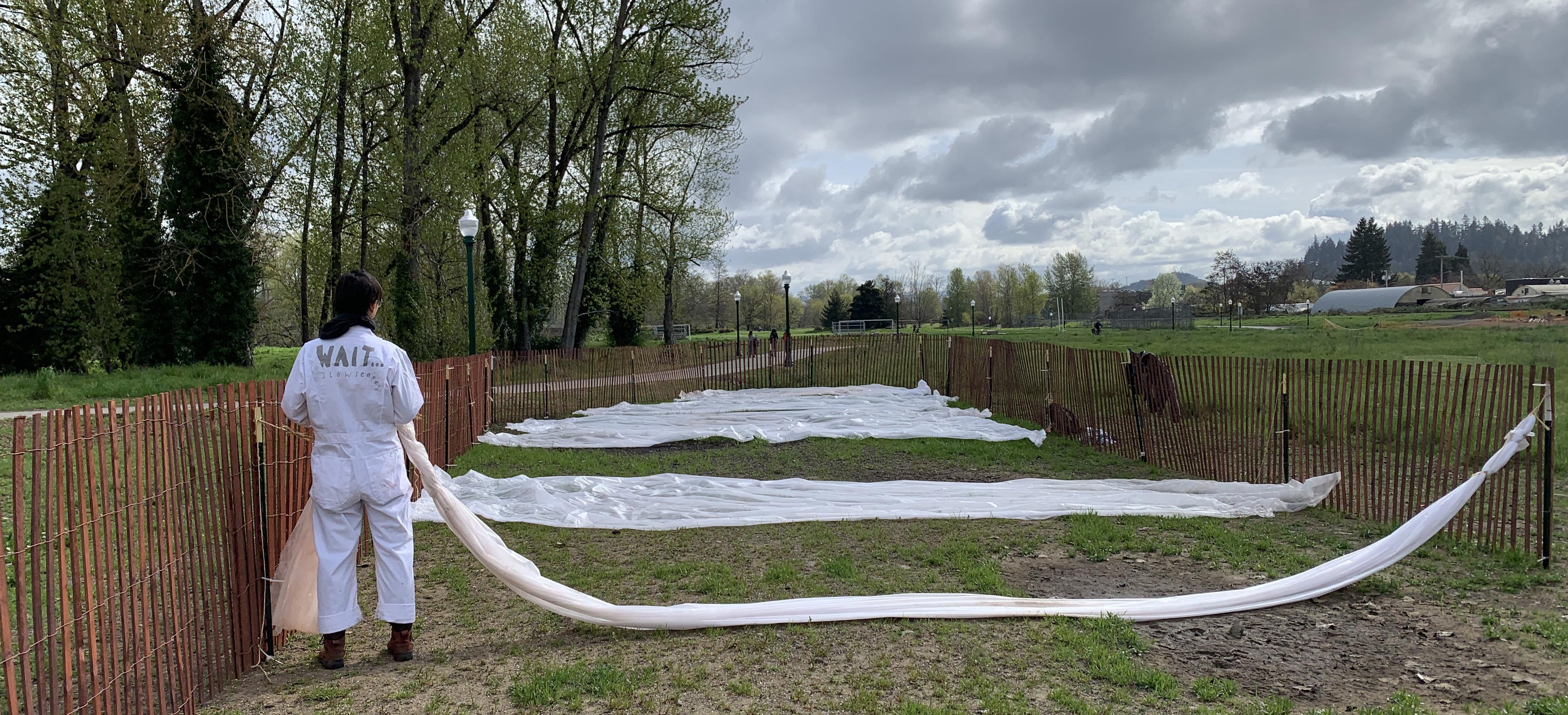
LAND CARE
Given the growing awareness about the effects of climate change on our landscapes and communities, a profound re-engagement with maintenance as vital life support for both our social and ecological systems is required. In a “broken world”, repair and care must not be afterthoughts of the design process but instead our primary objective, our starting point (Jackson 2014).
6
Defining Maintenance
What is landscape maintenance? There are the familiar activities that we can divide into subtractive (weeding, pruning) and additive (planting, mulching). There is a temporal quality to maintenance in that much of it is done according to the seasons, such as mowing or leaf removal. Then there is the asneeded maintenance - otherwise known as repair - when something breaks and needs fixing. The elements of spatiality and scale are also at play with maintenance all the way down to a cellular level. Our cells and the cells of other living organisms perform daily maintenance for function and elimination. From body, to home, garden, neighborhood, city, region, country, and world – all levels require care and upkeep.
Alongside these physical infrastructures, our social infrastructures require maintenance as well. Social systems like health care, welfare and education all require ongoing support and care. On the individual level, our friendships and family relationships require upkeep to thrive. Repetition is the rhythm of routine maintenance. Deferred maintenance will almost always lead to the need to repair or recovery, highlighting the requirement for maintenance to occur with regularity. Maintenance is never done, only kept up with because it is not a linear process, but a dynamic one.
The Challenges
There are many layered qualities of maintenance: political, social, physical, cultural, and as such, there are myriad challenges associated with maintenance, not the least of which involves social perception and aesthetic standards.
Many current landscape maintenance and aesthetic standards in the U.S. are rooted in Eurocolonial traditions. These non-situated traditions have had ecological ramifications since they ignore site-specificity as well as local ecological knowledge (Berkes 2000). Idealized pastoral landscapes have a way of erasing site history, memory, and indigeneity. As a result, many current landscape maintenance and aesthetic standards have detrimental effects on ecological function (Nassauer 1996). Likewise, the division between mental labor and manual labor has deleterious effects on our social systems. Both social and physical infrastructures are at play here.
The inherent repetition and routine of maintenance is partially responsible for the tendency for the importance of maintenance to be overlooked, rendered invisible by its ubiquity. Another reason for this invisibility is contextual, at least for western capitalistic societies where innovation is valued above all else. New products, new experiences, new sales – these things do not encourage one to take care of the existing, the old, the worn out. As a result, our physical infrastructures are crumbling and landfills overflowing (Jackson 2014, Mattern 2018). There is a general lack of long-term thinking, and a misunderstanding about what it takes to maintain landscapes.
8
MIERLE LADERMAN UKELES INSPIRATION
Too often, there is a divide between those who do the mental labor such as design of landscapes, and the manual labor of upkeep. The artist Mierle Laderman Ukeles expressed this divide in her Manifesto, calling them “Development” and “Maintenance” (Ukeles 1969). “Development” is creation and innovation, generative and exciting. This is where our culture invests its energy and interest. Shiny new things and novelty reign supreme. The other category, “Maintenance”, is often viewed as drudgery and chore-dom, in service of the creations. People win awards for “Development” (such as the design of landscapes) but not for “Maintenance” (the service work that goes into caring for those landscapes) (Jackson 2014).
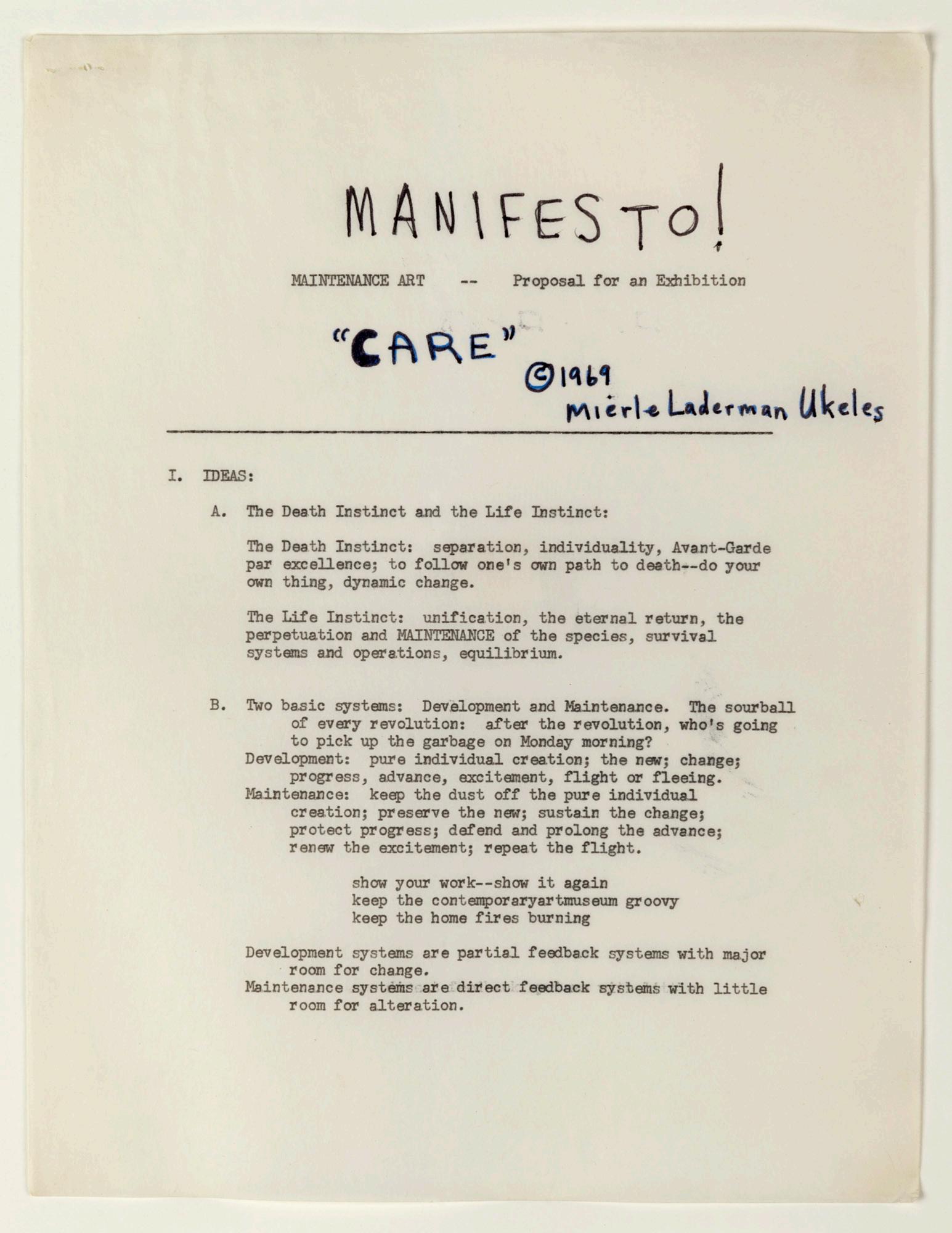
Service is an important word here, and one that is culturally significant. Service work is not exalted in the same way that other professions are, and those who do service work are not given the same respect as those who work in management or executive positions. Human labor is essential to maintenance, yet maintenance workers are often treated as second class citizens, through low wages and status (Dion 1996).
Service work is also a gendered concept, with the history of women doing service work, either in the home or out, such as domestic work, while men traditionally worked in maintenance jobs involving sanitation and groundskeeping. Additionally, service work involving maintenance “rel[ies] heavily on poorly paid immigrants and people of color”, furthering inequity (Mattern, 2018).
MLU Maintenance Art Manifesto 1969
source: queensmuseum.org
10
Creative Practice and Maintenance
Looking to other disciplines and learning from their insights can only enrich the practice of landscape architecture. Mierle Laderman Ukeles’ work to explore and expose the complexity and nature of maintenance and the lived experience of the people that do maintenance work is unparalleled. Through empathy and connection, Ukeles’ socially engaged art practice lends visibility to the realities of maintenance work and the skewed distributions of respect and resources available to those who work in maintenance. She is revealing a process that tells us something about ourselves and our communities. The perspective that the sanitation workers have on the environment and the communities from which they collect is a unique one – like reading tea leaves, but with garbage. By taking the time to connect with them and build trust, Ukeles opens a world that is mostly unseen. That she does it as an artist and it is called art is important, too – the response likely would have been quite different if they had just called it an awareness-building exercise, or a public outreach campaign. The label art demands a different perspective which is useful for building awareness. Long term care as an artistic, creative practice reveals both the physical and social infrastructures that require our ongoing attention.
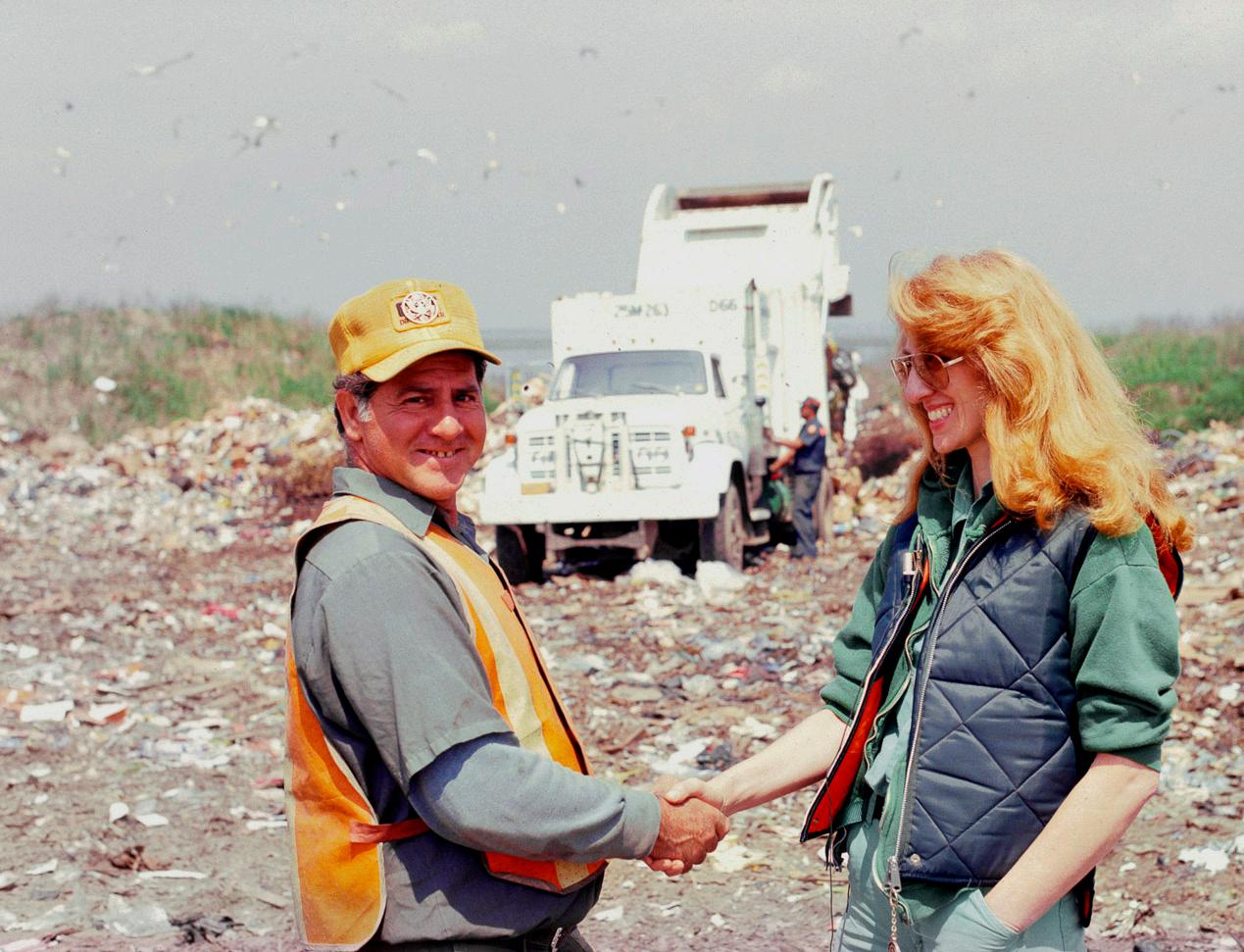
source: artnews.com
12
Ukeles’ and other socially engaged artist practices give us a new perspective on the unseen components of the status quo, whether it be societal, political, or economic systems. MLU and sanman 1979-80
The practice of landscape architecture can benefit from looking at maintenance in new ways, informed by the arts and considering how collaboration, multiple and activated audiences, a working relationship with communities, and political intention can address the need for a new maintenance paradigm in the Anthropocene/Capitalocene. “To put it bluntly, while contemporary art has enjoyed the myth of radical individuality (development, in Ukeles’s parlance), artists—and the art community— are actually pretty good at setting up systems to keep things going (Russeth 2020).”
So much thought and creativity are put into designing landscapes – hours of research and collaboration and iteration to create beautiful and captivating outcomes - but when it comes to ideation about the long-term care of these landscapes, the door to creativity seems to slam shut. Suddenly, it’s an unsolvable mystery and all that creativity just dries up. It’s easy to take a cynical view of this – that there’s no money in maintenance, that no one gets famous for maintenance, that it’s considered blue collar work that those with degrees feel is not appropriate for the level of education that they’ve achieved – and to be sure, there is likely some of that. But it seems that the biggest problem is a systemic one – it’s just the way we do things (or don’t do them, in this case). Design is taught to landscape architects and designers; maintenance is taught to landscape contractors. But anyone who has ever worked in landscapes knows, design and maintenance are inextricably linked. Maintenance is design - dynamic, ongoing, adaptive design.
Artists such as Ukeles act as human highlighters for such quiet, humble, unseen processes. It feels like a first step, a preamble. The acknowledgement is so important and yet, is it enough to change the dominant paradigm that rewards innovation more than maintenance, that undervalues the work and workers that keep the world running? If we are to understand maintenance and repair, it must be made more familiar and valuable, and Ukeles has showed us a way to do that.
Maintenance Art Typologies
As a framework for this project, four main typologies of maintenance art in Ukeles’ oeuvre have been identified. Interaction is where she directly engages with a community involved in maintenance. An example of this would be her Handshake Ritual (1979) that was part of her Touch Sanitation series where she shook the hands of 8500 sanitation workers and accompanied them on their routes. Performance is when she employs a choreographed presentation involving maintenance people, actions, and equipment. An example of this typology is Washing/Tracks/Maintenance from 1973, where the artist washed the steps of an art museum. Exhibition is perhaps the most recognizable as traditional art in that it often occurred in an art institution. Ceremonial Arch Honoring Service Workers in the New Service Economy (1989-1994) is a large piece made up of 6000 dirty work gloves and garbage materials. Finally, Documentation is a typology that occurs frequently in Ukeles’ work since much of her work is timebased. It should be noted that there is much blurring between these four typologies – Touch Sanitation, for instance, while mainly listed as interaction here, includes aspects of all four.
14
source: newyorker.com
direct engagement with a community or action involved in maintenance
Washing/Tracks/Maintenance 1973
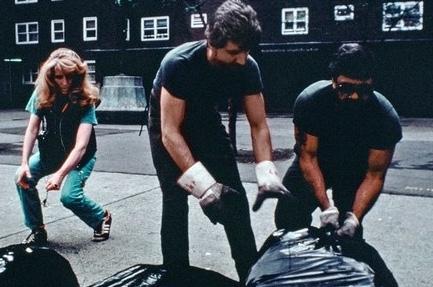
choreographed presentations involving maintenance acts and equipment
Ceremonial Arch Honoring Service Workers 1989-1994
creation of objects from maintenance materials to be shown in art institutions

source: saic.com source: artsy.com
Dressing to go out/Undressing to Go in 1973

photographic records of maintenance activities showing repetition and seriality
TYPOLOGIES OF MAINTENANCE ART
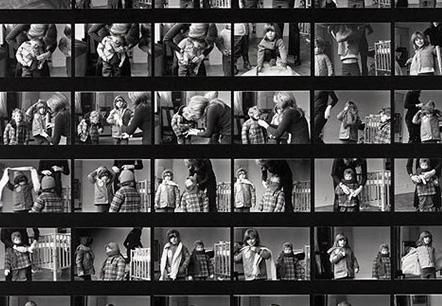
Touch Sanitation 1978-80 Performance Interaction
Exhibition Documentation
source: timeline.com 16
For this project, the maintenance art typologies were explored on the North Campus Riverfront at the University of Oregon. This site was chosen for several reasons. Field work was central to the premise of this project and this site was easily acccessible. There was also landscape maintenance research already happening there. For several years prior to this project, Michael Geffel, my advisor and professor in the landscape architecture department, had been conducting field experiments in parametric mowing.
BACKGROUND
Additionally, it is a disturbed site with novel ecosystems that is representative of many highly impacted urban landscapes that are frequently undervalued and overlooked. In the last 200 years, massive changes caused by dispossession, extraction, and landfill drastically altered the landform, soil structure, and ecological relationships of this place. What we see here today looks and functions very differently from what was here prior to settler colonialism.
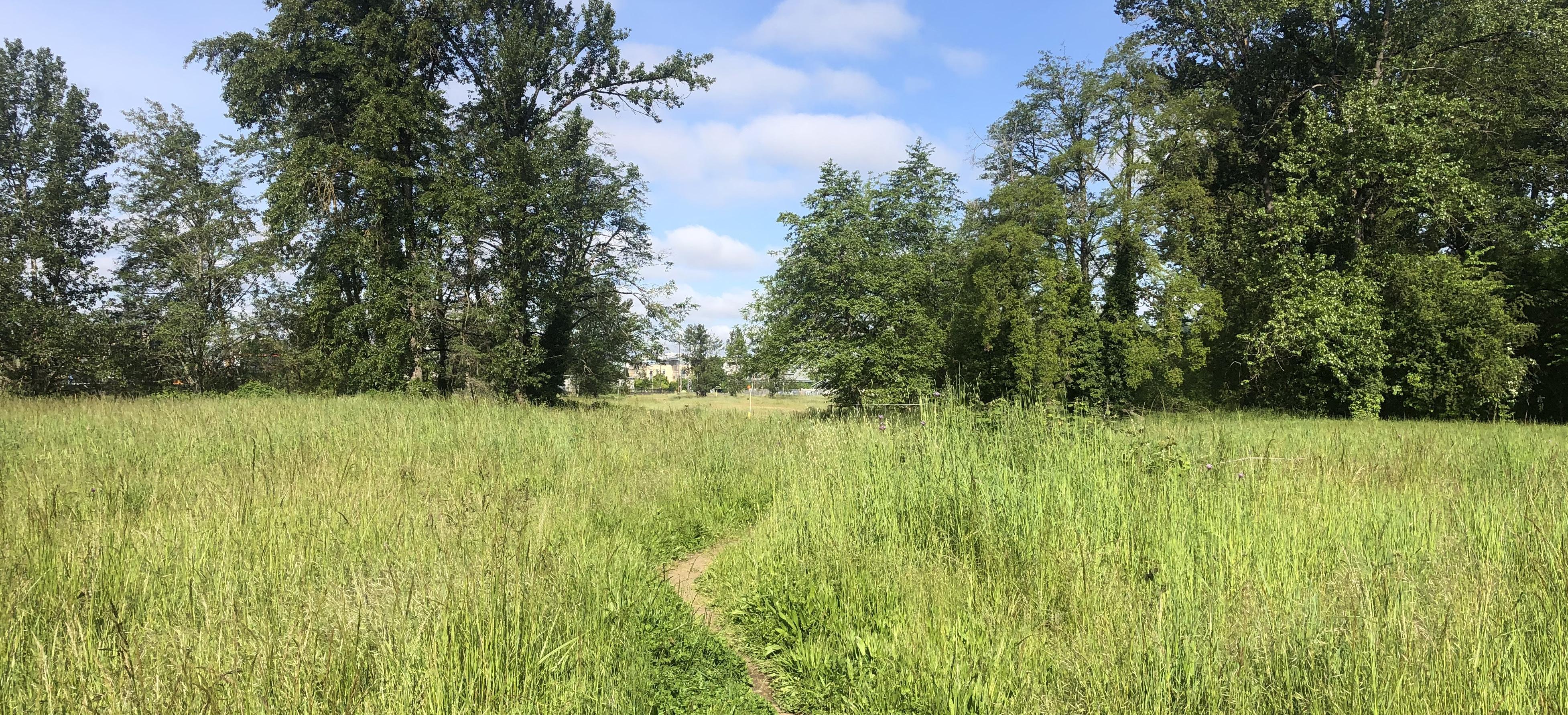
18
source: lchm.com
1936
gravel mining begins and continues for the next few decades; concrete and asphalt production follow shortly thereafter
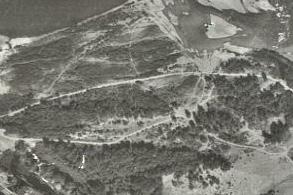
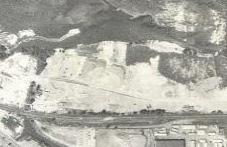
source: lchm.com
1968
2006
source: google.com
bike path built in 1971; a mix of native and nonnative vegetation has filled in
2021
site has now been filled with construction debris and mixed soils; site is acquired by UO
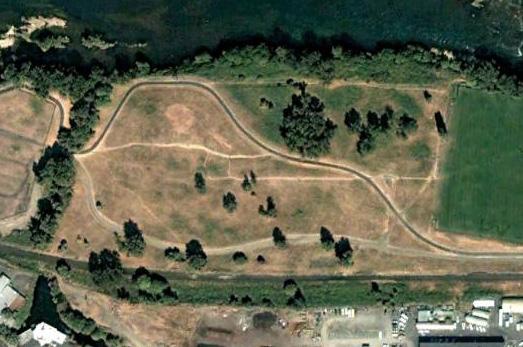
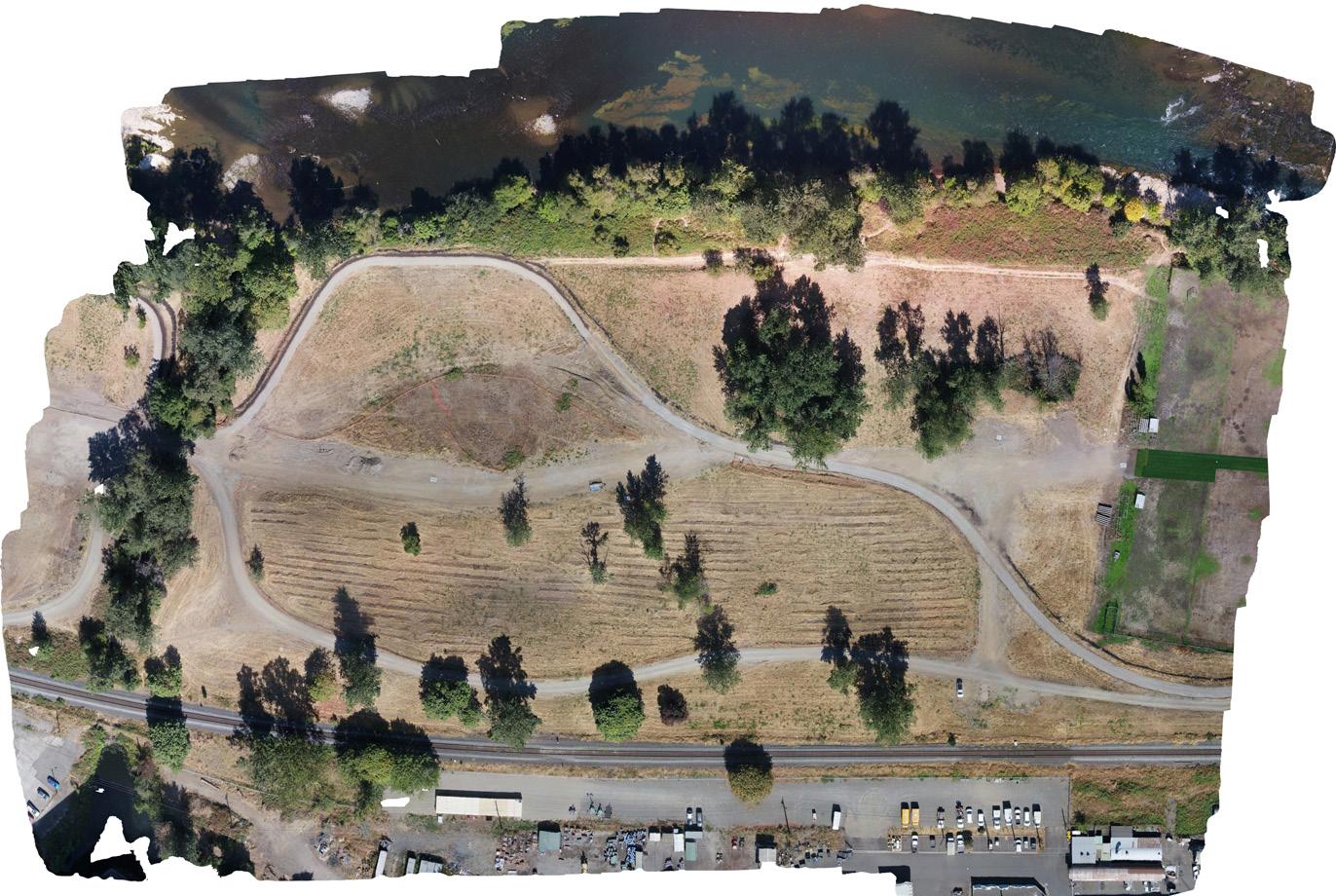
water easement and bike path construction create disturbance and compaction
SITE: LAND LAB
INDUSTRIAL AFTERMATH
source: Michael Geffel
20
zone of disturbance

mulch & hydroseed
Compacted soil. Failed seeding. Piles of construction debris. A thin veneer of bark mulch on the most visible areas. This was our starting point.
SITE: LAND LAB
JANUARY 2022
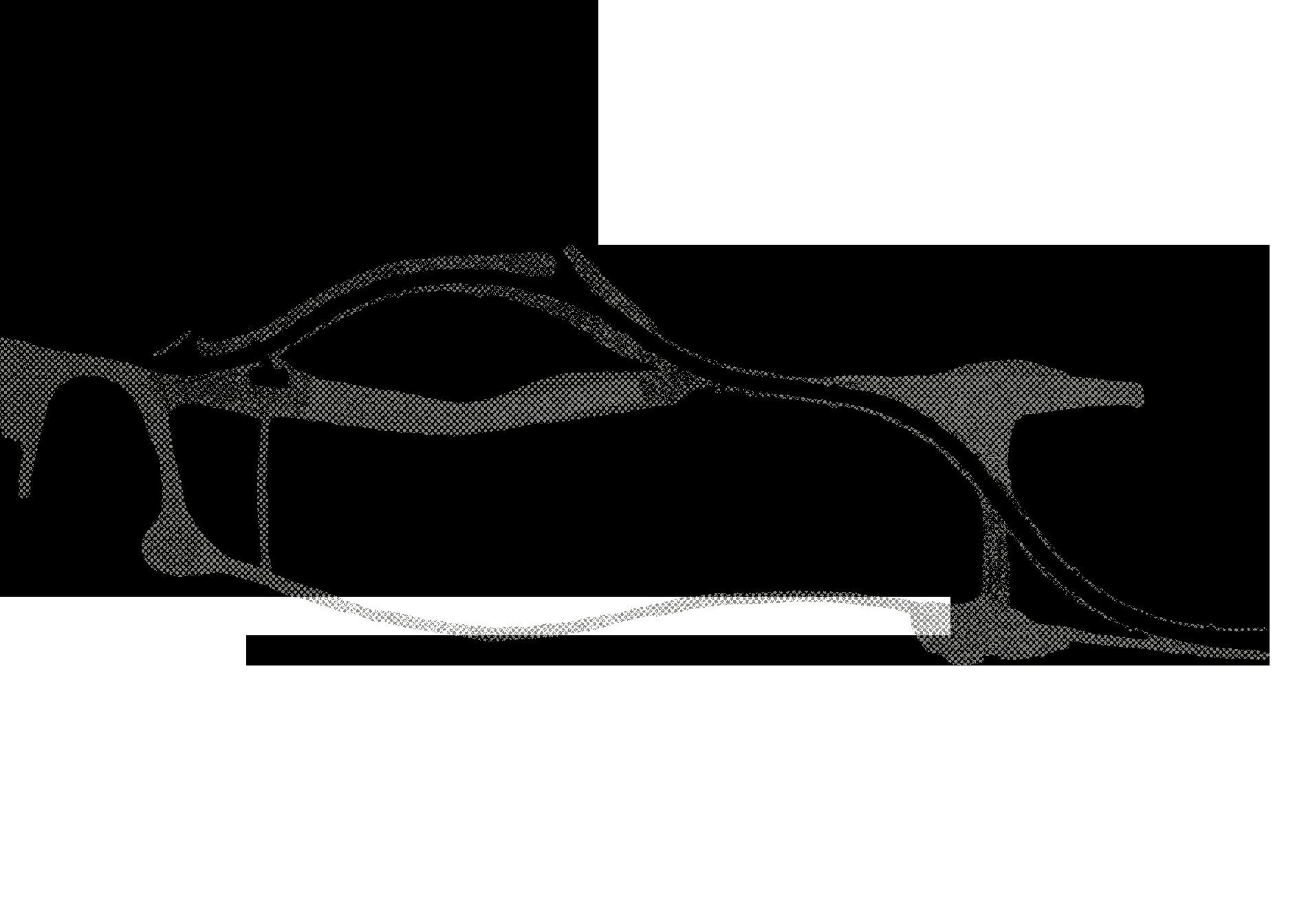
CONDITIONS 22
If landscape architects acknowledge that the essence of maintenance is care, landscape maintenance becomes increasingly specific, adaptive, and inventive.
- Michael Geffel, “Landscape Design through Maintenance: Field Case Studies on Parametric Mowing”
Professor Michael Geffel’s field research in parametric mowing explores maintenance as a creative act, generating new approaches for adaptive design and communicating care.

EXISTING KNOWLEDGE
THE CREATIVE POTENTIAL OF MAINTENANCE
source: Michael Geffel
24
source: jstor.com
A belief that nature needs no presentation and that presentation is essentially sinister leaves ecosystems highly susceptible to misunderstanding
Joan
Joan Nassauer’s influential article “Messy Ecosystems, Orderly Frames” coined the term “cues for caring” meaning the visual signals people need for reassurance that a landscape is being cared for.
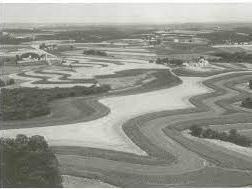
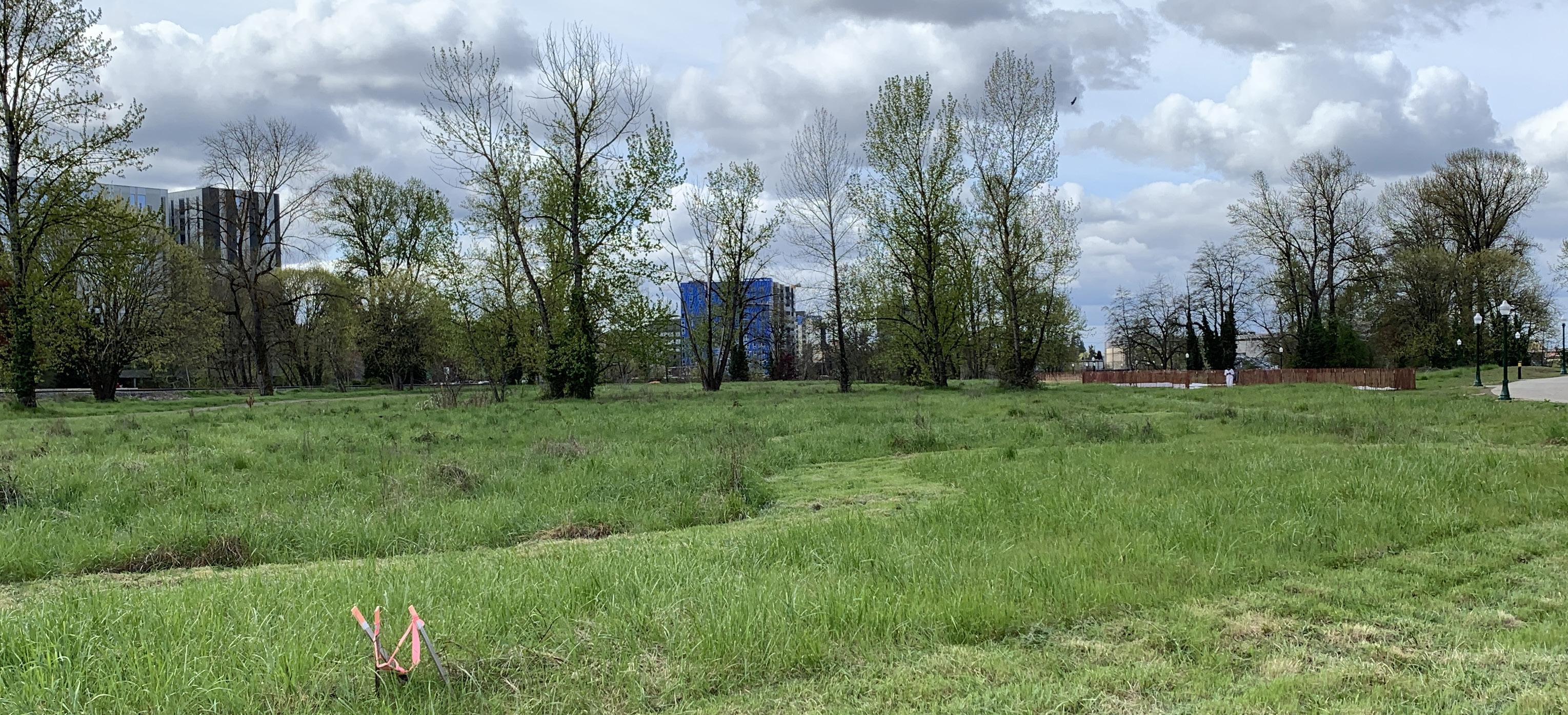
EXISTING KNOWLEDGE
-
Nassauer, “Messy Ecosystems, Orderly Frames”
26
THE CREATIVE POTENTIAL OF MAINTENANCE
This research was a collaborative effort. I teamed up with my advisor, Michael Geffel, and my classmate, Masayo Simon, for these explorations and work parties, developing a communal practice of researching, processing findings, and designing outcomes.
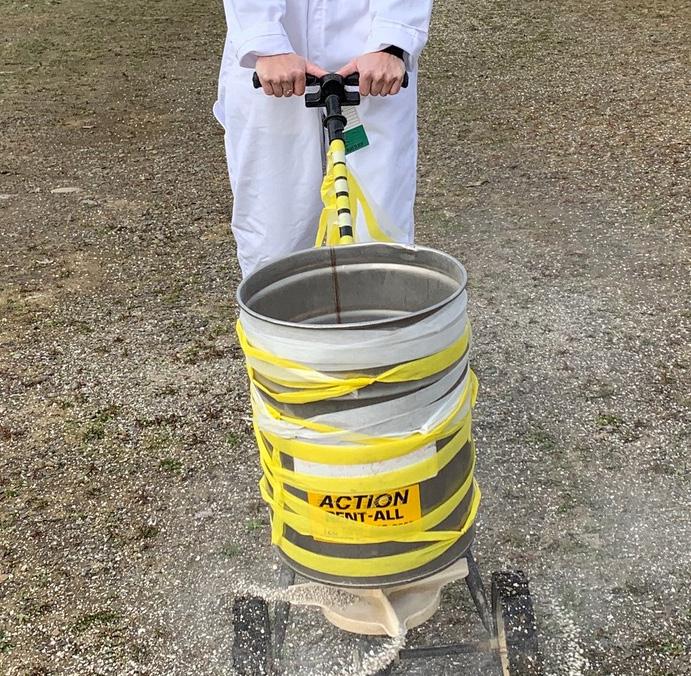

The approach for exploring the Ukeles typologies was informed by creative practice as well, specifically creative inquiry processes that center experiential connection. The two main creative inquiry methodologies are as follows:
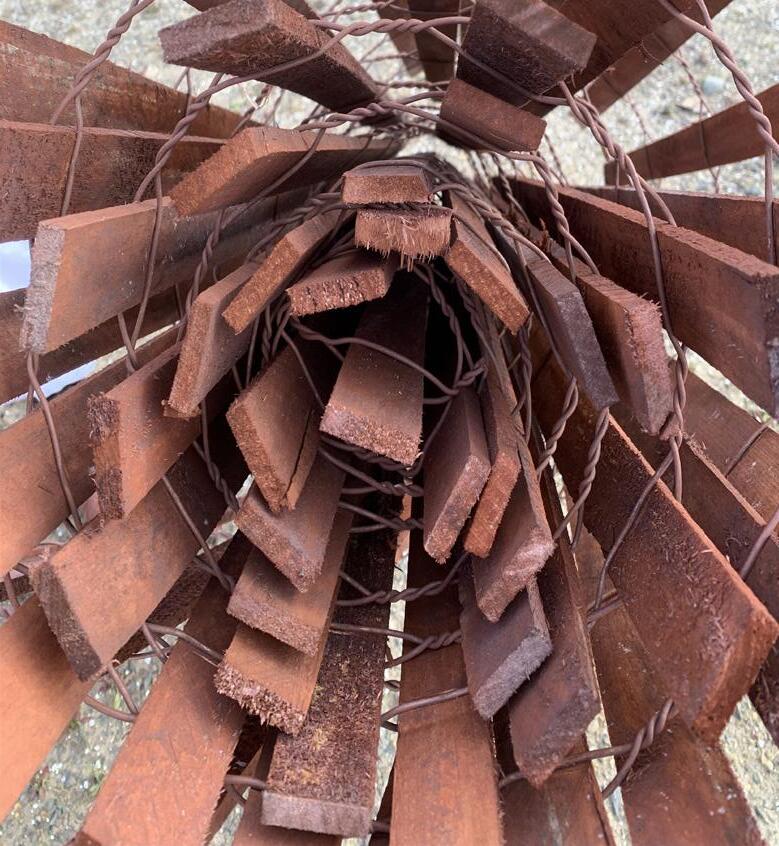
RESEARCH
“Curious Methods” by Karen Lutzky and Sean Burkholder advocates for prioritizing physical perception and interaction with a site as well as creative explorations to increase understanding of landscape processes.
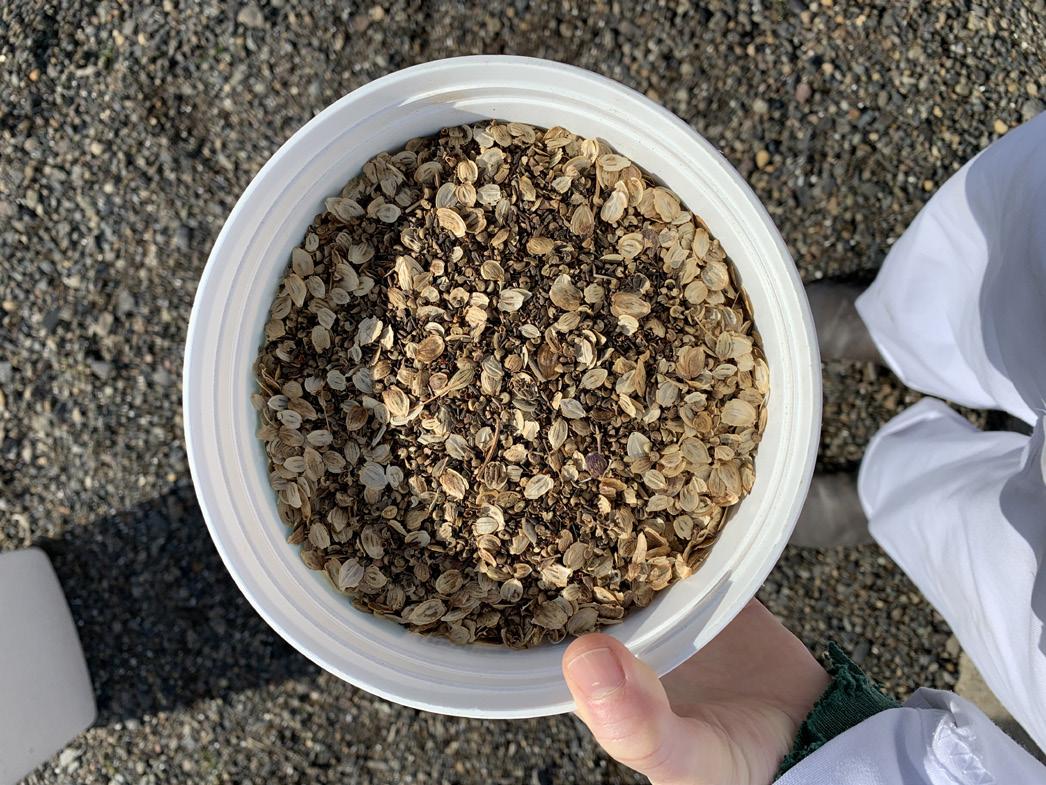

Tim Ingold’s Making urges us to consider an integrated approach to inquiry wherein the relationship between acquiring and applying information is both interactive and recurring. This requires active participation and creation or, in other words, making.



28
CREW INTERVIEW
Taking cues from Ukeles’ Touch Sanitation, four members of the University grounds maintenance crew allowed me to ride along with them and talk about labor and land care. They have been working at the University grounds crew for anywhere from a few months to 10 years. While it was my intention to let the conversation flow, I had prepared a few questions:

How would you describe your work?
What do you wish those who design landscapes knew about maintenance?
Which areas are harder or easier to maintain and why?
Do you feel your work allows you to be creative?
[Fixers] know and see different thingsindeed, different worlds - than the betterknown figures of “designer” or “user”
Performance Interaction Documentation Exhibition
- Steven Jackson, “Rethinking Repair”
30
“Ruthless stewardship”
What part of your maintenance work allows you to be creative?
- Nick
“Habitat creationseeing other species using the space
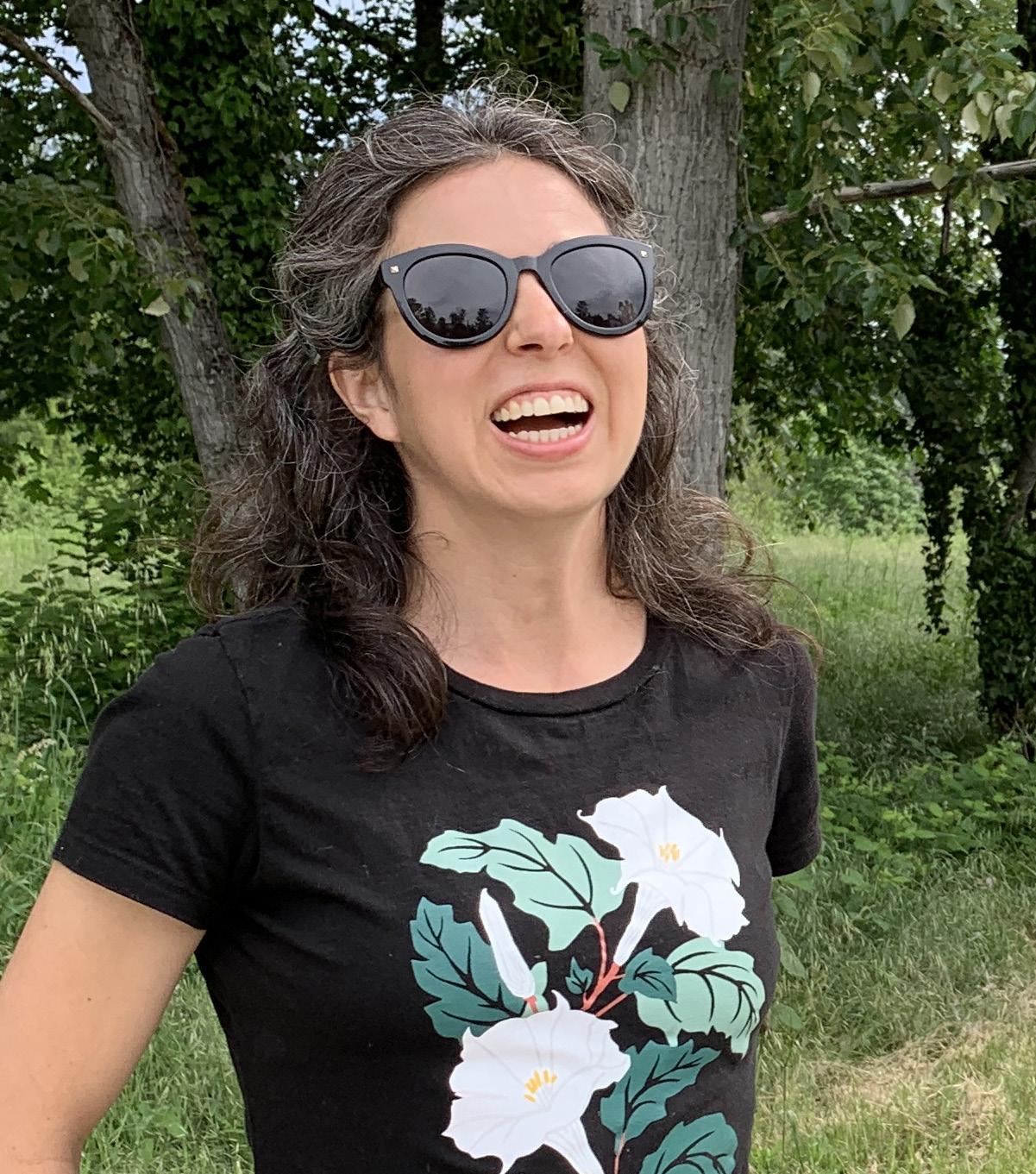 - Madeline
- Madeline
*At the time of this project, Nick was the sole crew member whose area of maintenance included the North Campus Waterfront which contains the Land Lab.
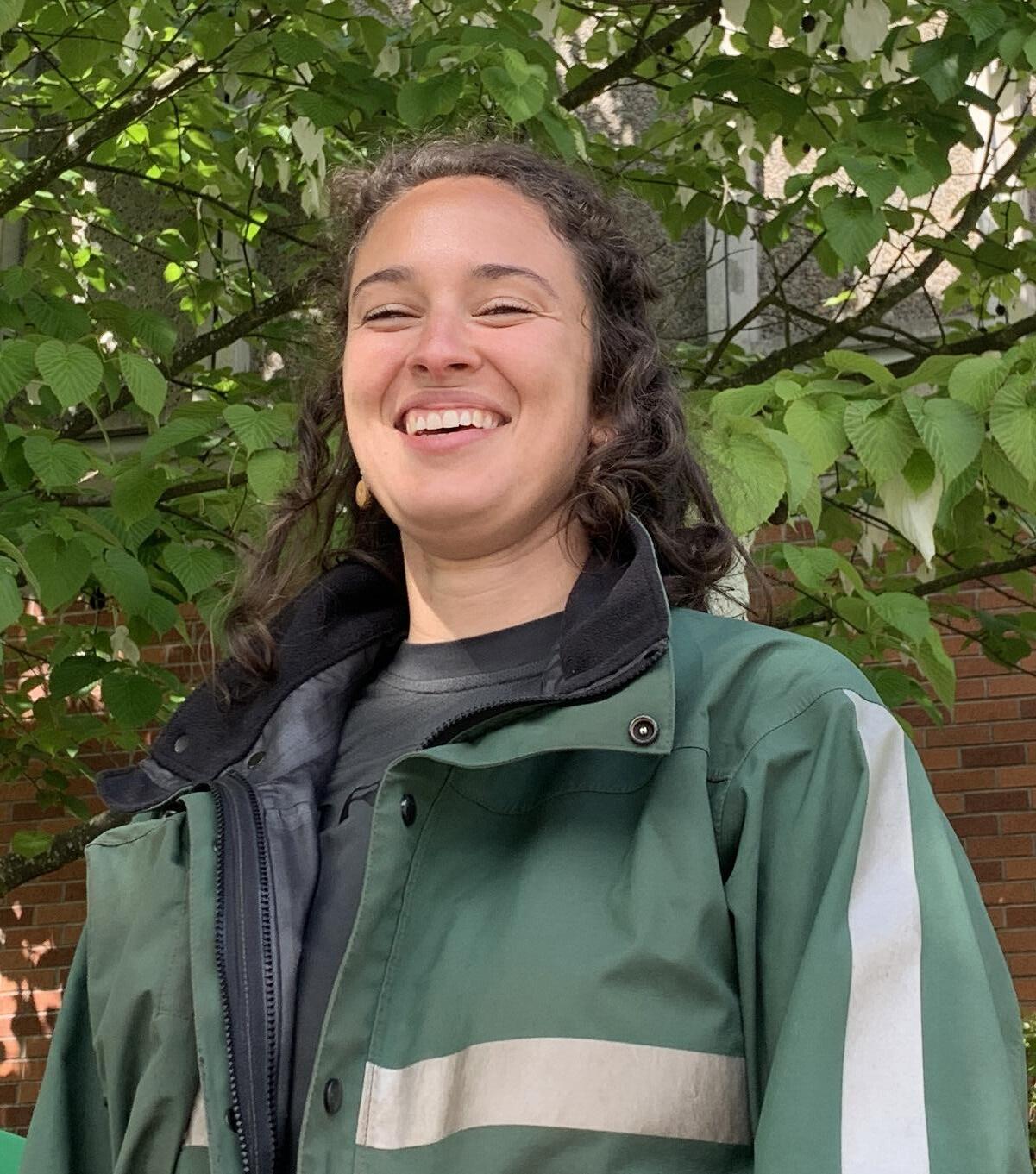
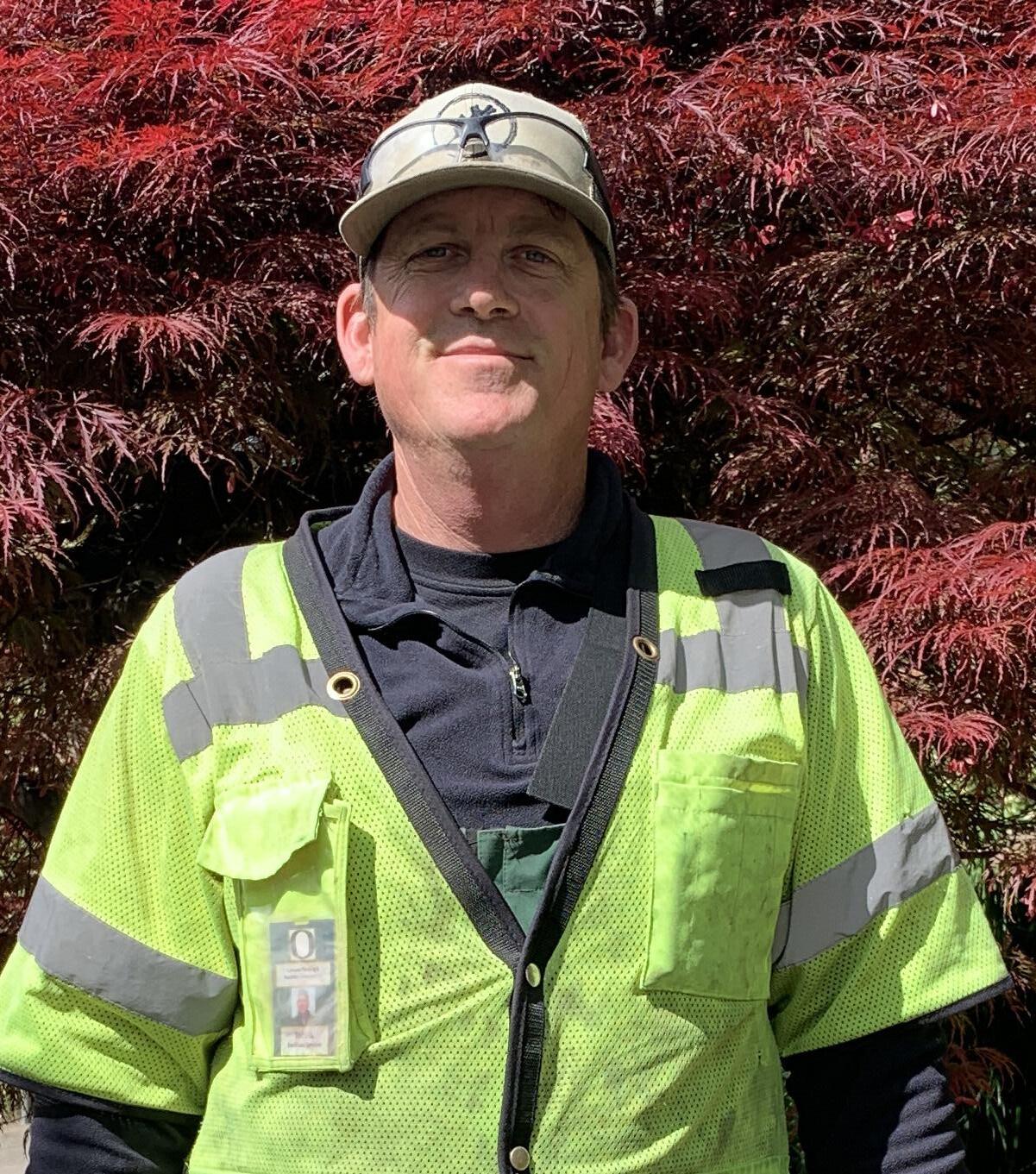

“Working with students”
“Mulching leaves and leaving them in planting beds to increase soil health”
- Todd
- Lauren
32
Care-Centered Practice
Recurrent themes from these conversations fell into four categories: Access, Materials, Time, and Relationship
Access specifically relates to the ability to get in and care for a place. Quite simply, if a crew member cannot readily access a space with the necessary tools, it is harder for them to care for it. I was shown some examples of designed landscapes with poor access that required the crew member to get creative or uncomfortable to take care of the grounds. But access can also relate to other barriers to care beyond just the physical: there can be political, social and cultural barriers that get in the way of connection of care.
Materials are the stuff of landscape: soil, plants, hardscaping, but also the temporary, intermittent things that come in from construction or installation. When these items are selected by designers there is the hope that they would be chosen with the intention that they be durable and site appropriate. Unfortunately, that is not always the case, and the crews have to deal with the consequences, whether it be a poor choice of pathway material that gets slippery at the slightest hint of rain, or plants planted where they don’t get the right amount of sun or water.
Time is a constant in any landscape. Anyone who actively works within landscapes, such as the grounds maintenance crew or anyone who gardens understands that they are working with and within time. I heard from the crew members that they wished designers would consider time more in the design process. One example where time was not considered was shown to me - a newly planted landscape full of ferns, crisping in hot south-facing sun. There were trees planted as well, no doubt with the intention of providing shade but they were still saplings and it would be many years before there was sufficient canopy cover. The crew member responsible for this area was tasked with trying to keep the ferns alive and looking good in this high visibility area even though it was a losing battle.
Finally, relationship: too often those who are designing landscapes have little contact with those who tend to landscapes. This is unfortunate because the people caring for landscapes have a unique and valuable perspective on the realities of a place.
34
Does the design address barriers to care and maintenance?
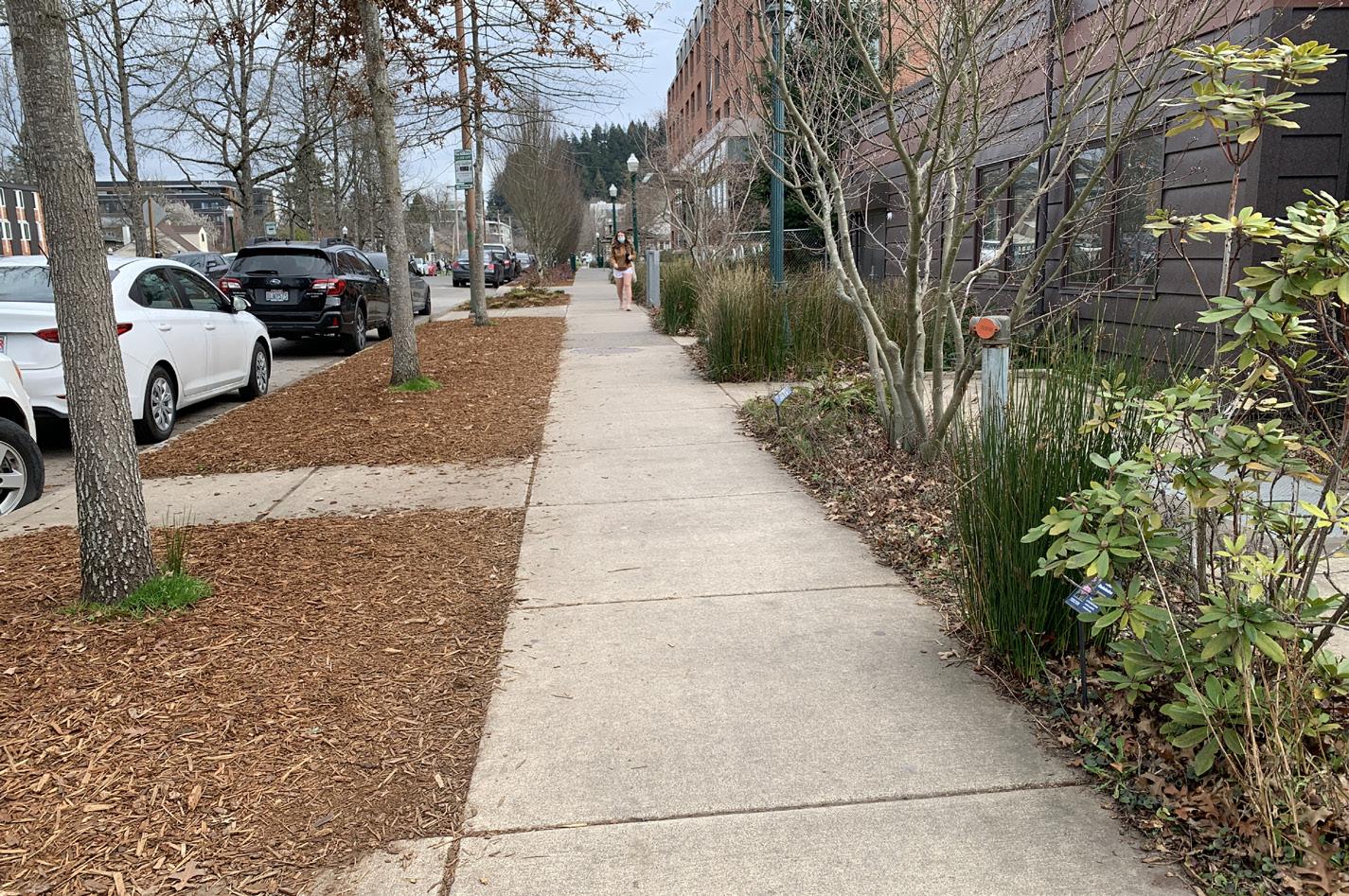
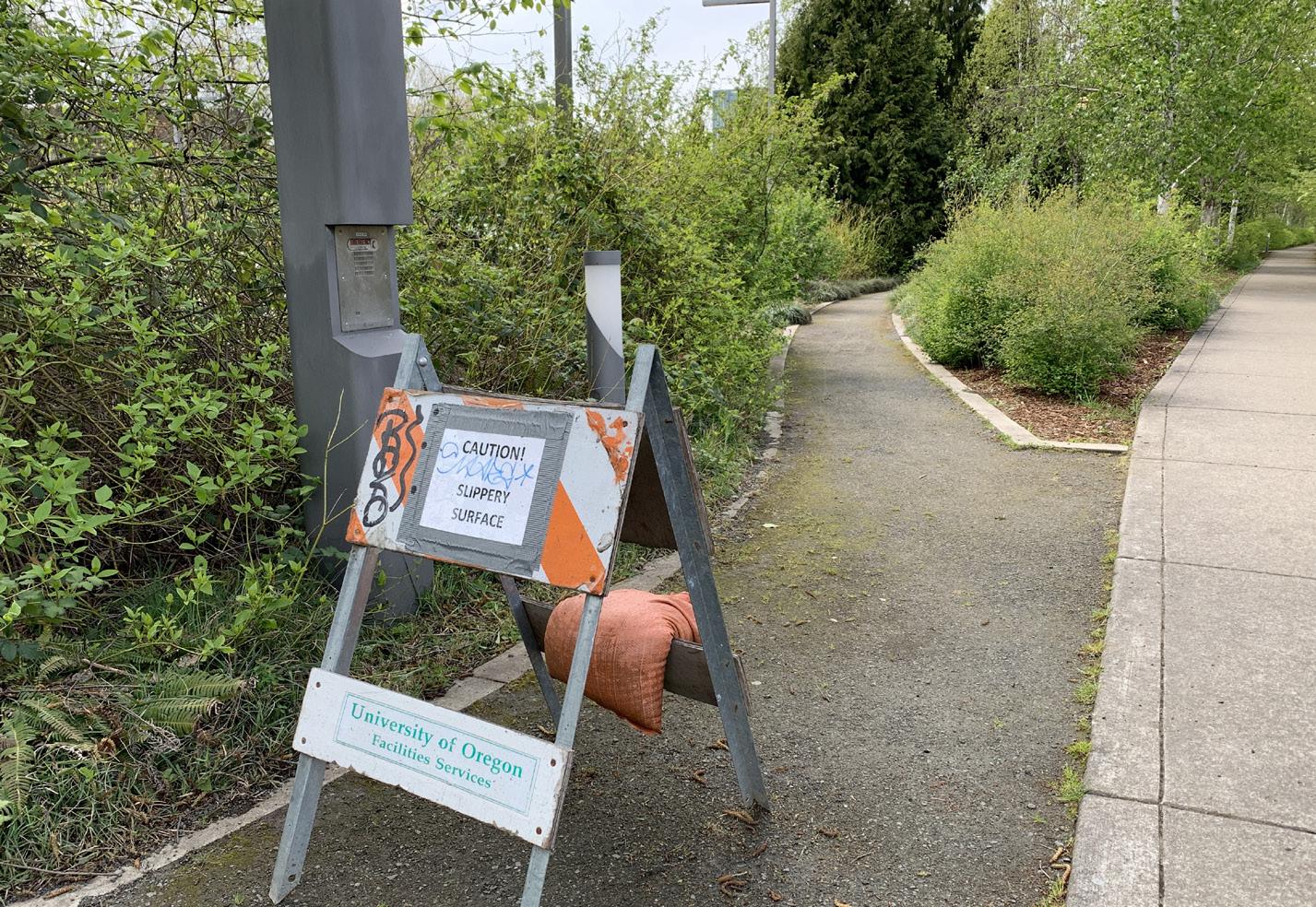
How is change over time considered in the design process?
Are the chosen materials appropriate for the place and conditions?

Are the people who know the place best included in the design process?
INCLUDING CARE
MAINTENANCE IN DESIGN
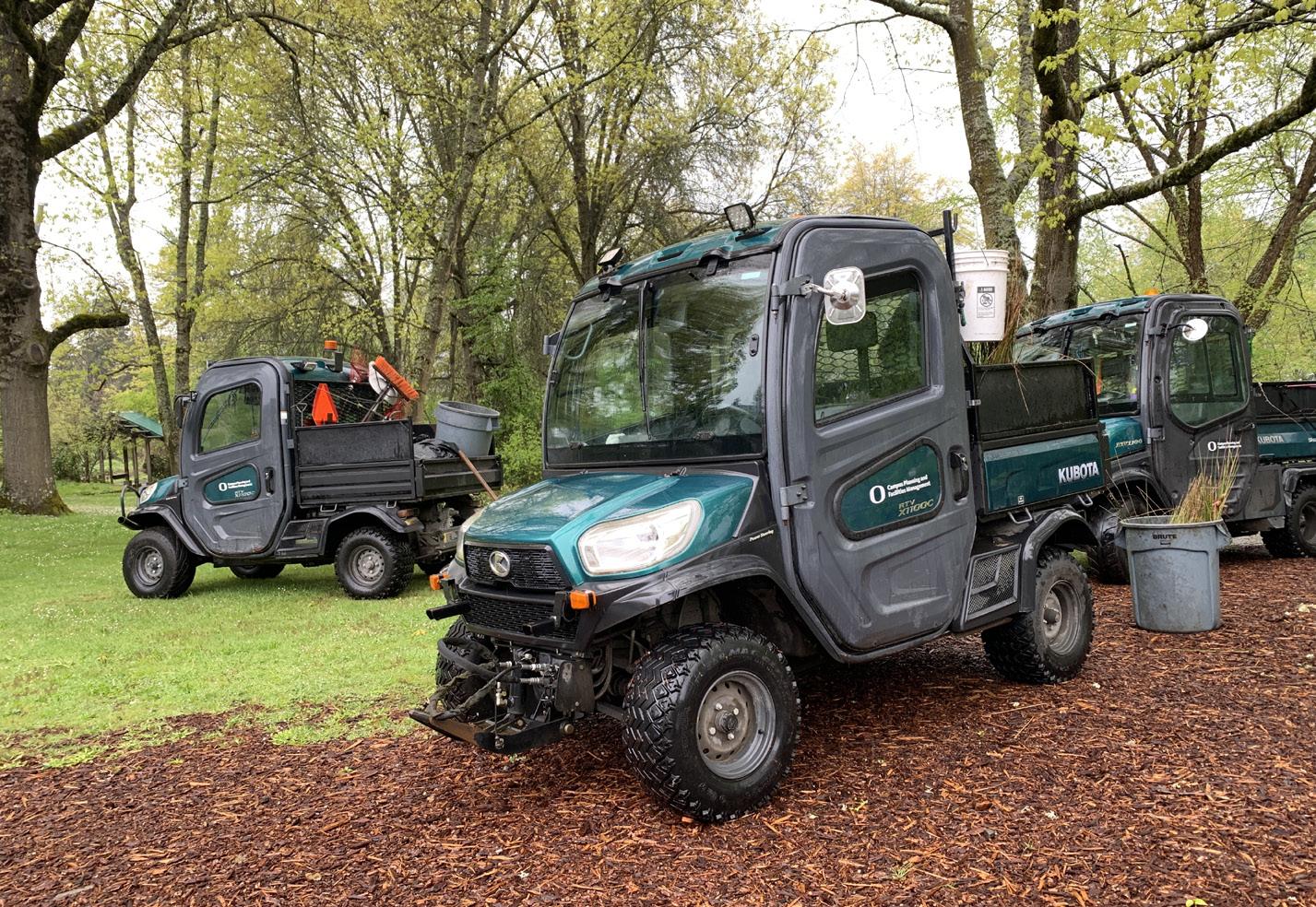
Materials Acces
Time Relationship
36
Like so many other design fields, landscape architecture is increasingly mediated by digital tools and data layers, and its practitioners often struggle to stay in touch with material realities.
 - Karen Lutsky and Sean Burkholder, “Curious Methods”
- Karen Lutsky and Sean Burkholder, “Curious Methods”
SEED & FENCE
Following the construction of the water easement, the area through the center of the Land Lab was very disturbed and compacted. It had been seeded in the fall, but that seeding had failed, so we adopted it. Michael chose a seed mixture of pollinator-friendly native annuals and perennials with the help of Bart Johnson and Bitty Roy, and we spread that in February of 2022.

Performance Interaction Documentation Exhibition
38
After seeding, we constructed the fence with the idea that it would help germination in the easement by keeping the geese from browsing. We sought to explore the creative potential and aesthetic properties of common landscape materials such as t-posts, temporary fencing and row cover fabric. The construction involved an adaptive, collaborative process, with multiple iterations happening throughout the spring of 2022 in response the changing conditions throughout the growing season.



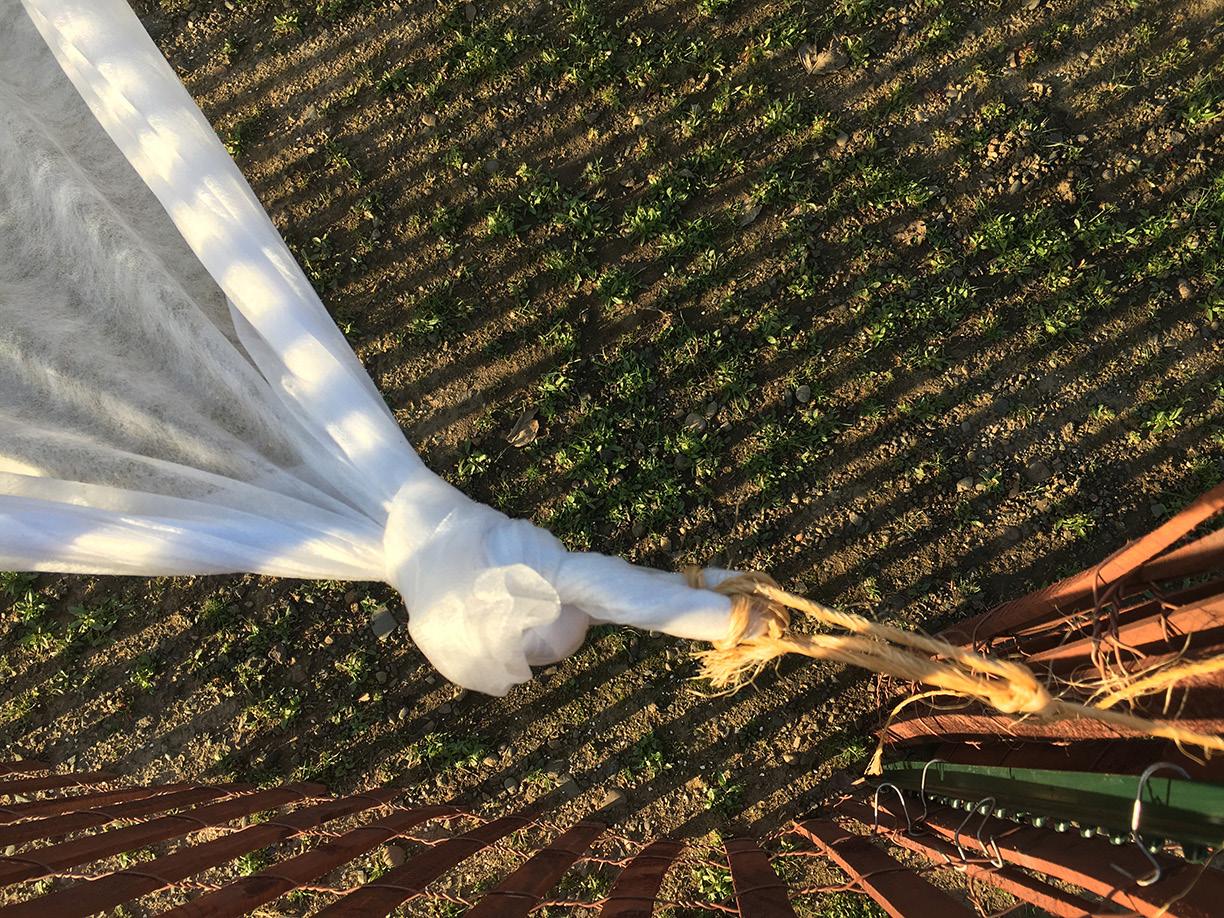

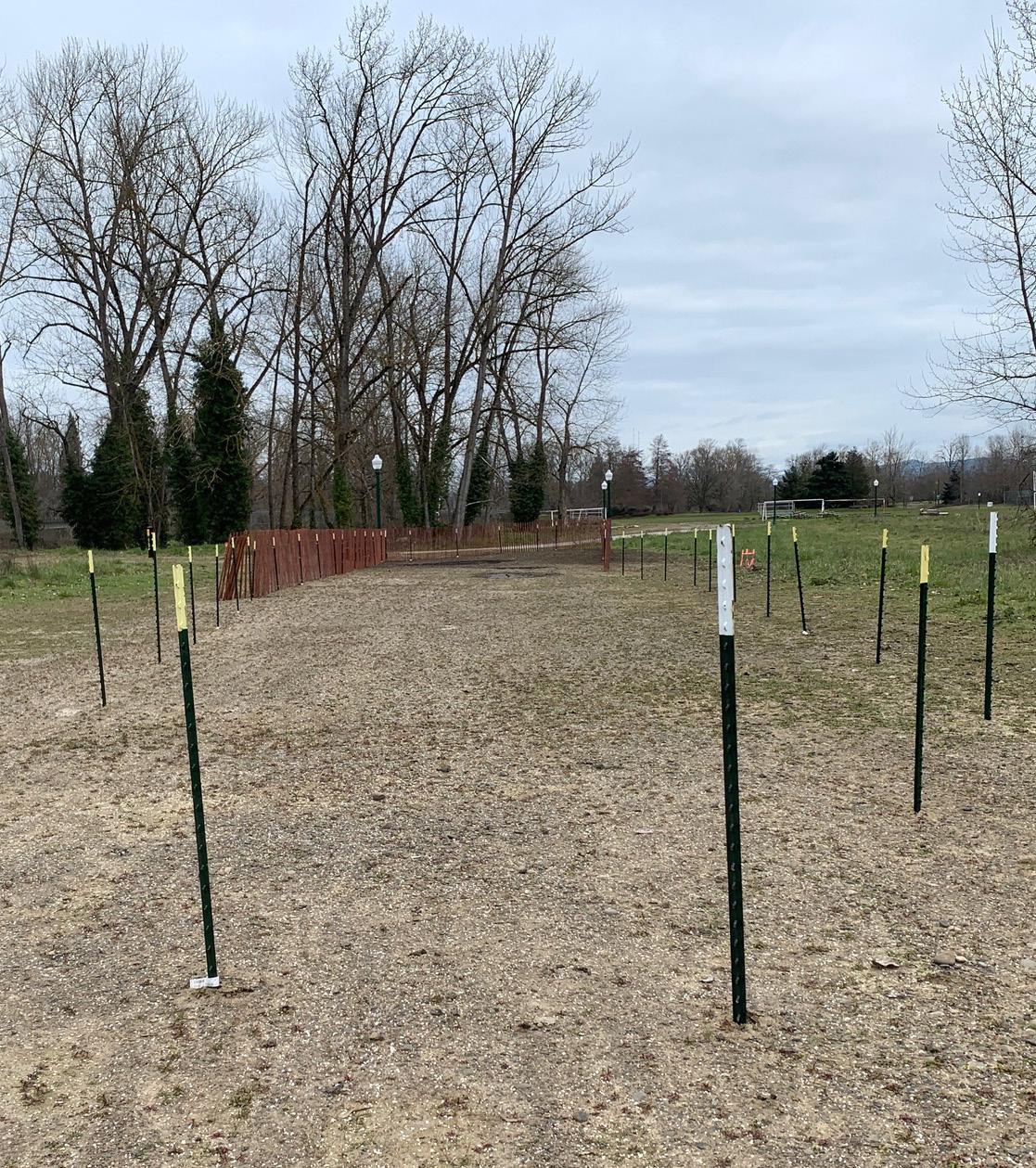
This kind of learning aims not so much to provide us with facts about the world as to enable us to be taught by it.
40
- Tim Ingold, Making
The interplay of light and shadow with the selected materials created many moments of aesthetic delight, changing with the weather and the progression of the seasons. We took the opportunity to document it frequently, via cameras on the ground and with the drone.


42
Maintainers require care; caregiving requires maintenance.
Reemay is a very common and useful material that is easy to overlook, but through this project its beauty became apparent. The wind became a collaborator and also made frequent maintenance necessary as the reemay got torn from vigorous gusts. Adaptation and improvements were necessary and creatively approached.
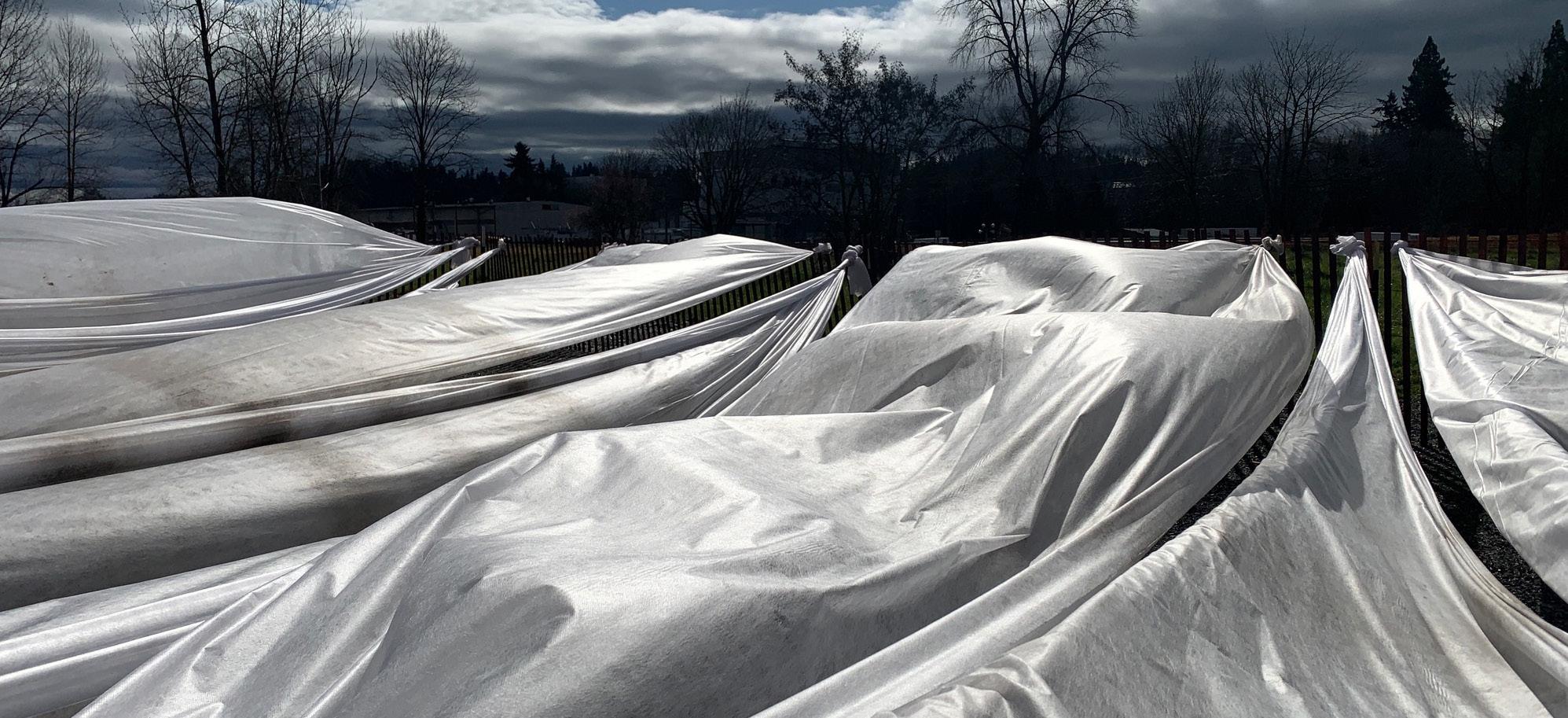 - Shannon Mattern, “Maintenance and Care”
- Shannon Mattern, “Maintenance and Care”
44
To study maintenance is itself an act of maintenance.
PHOTOPOINTS















Fifteen photo points were set up around the land lab and I committed to photographing them weekly. This idea came about by combining a guide to photopoint monitoring and the Ukeles’ documentation typology. It became a weekly ritual, rain, or shine, creating a structure for my commitment to this place. This ritual became something I looked forward to as a quiet practice of sensory connection. The images that were created recorded the changes over time due to ecological and maintenance processes at play here.

Performance Interaction Documentation Exhibition
- Shannon Mattern, “Maintenance and Care”
46
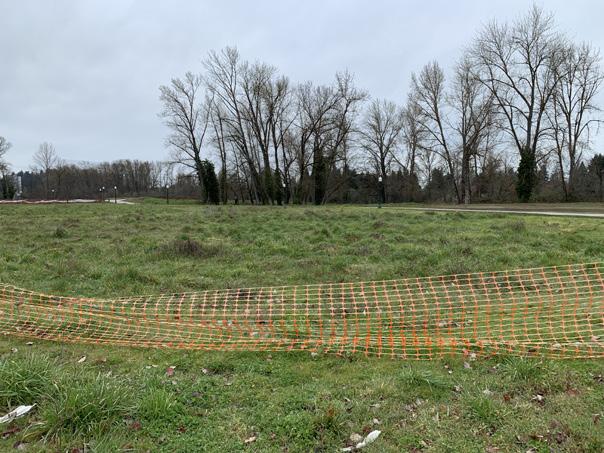
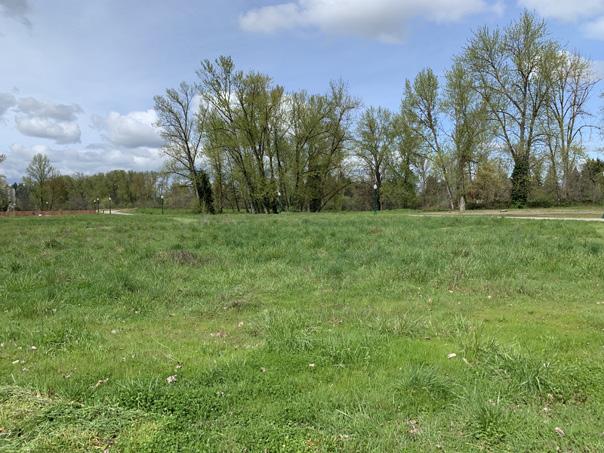


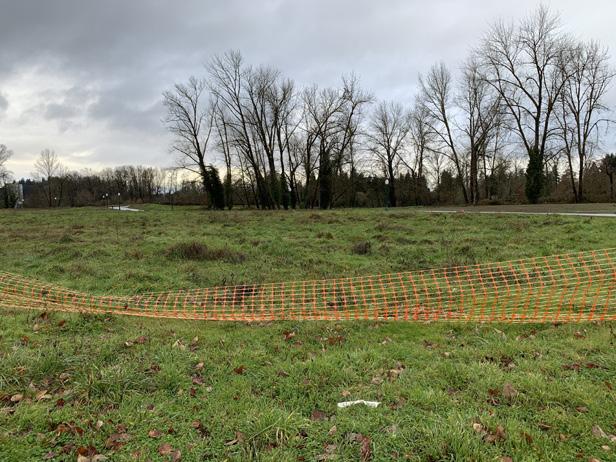
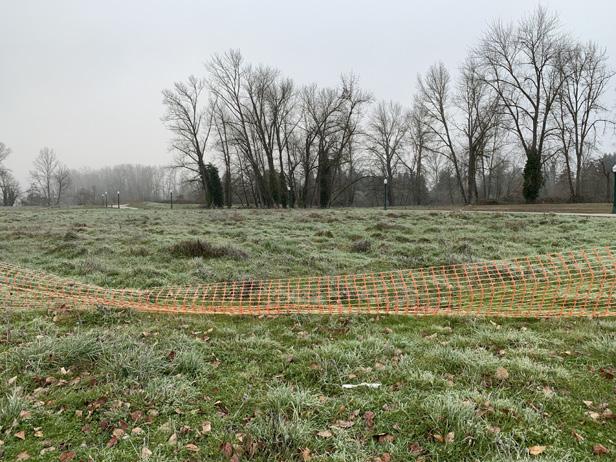

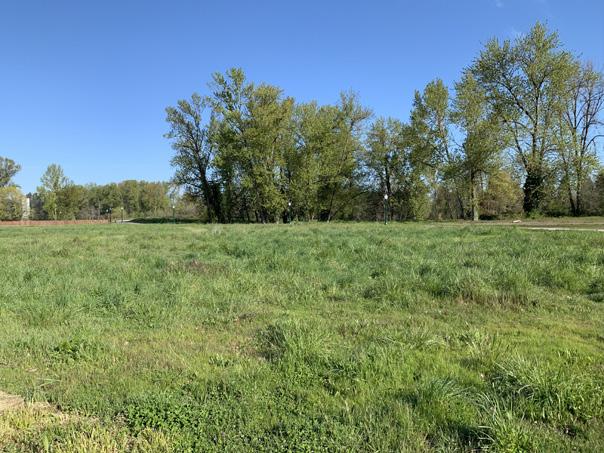
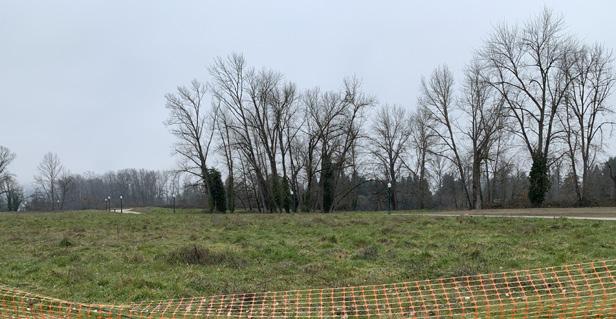



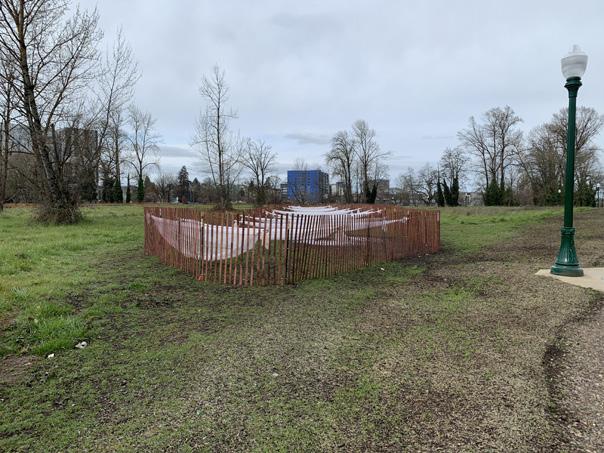


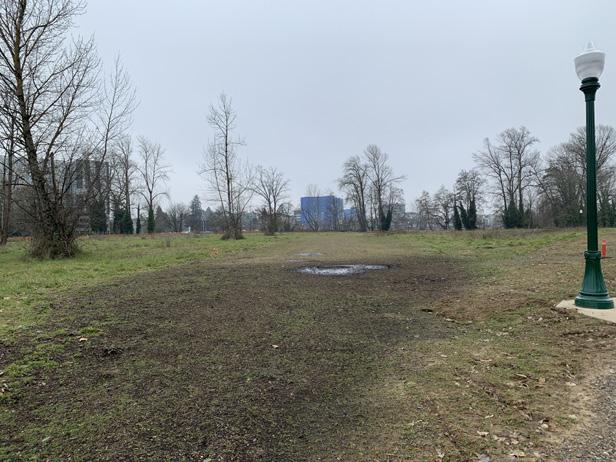

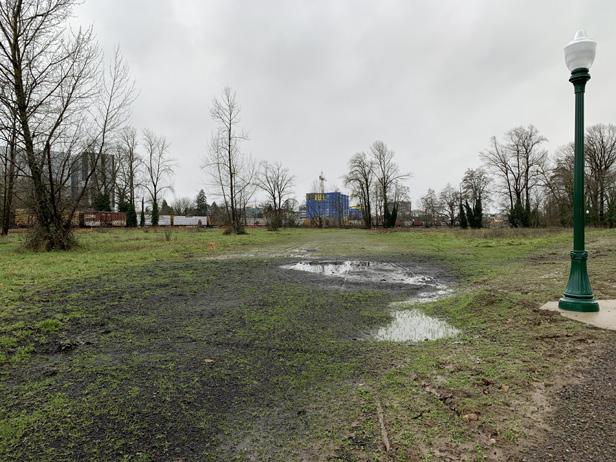
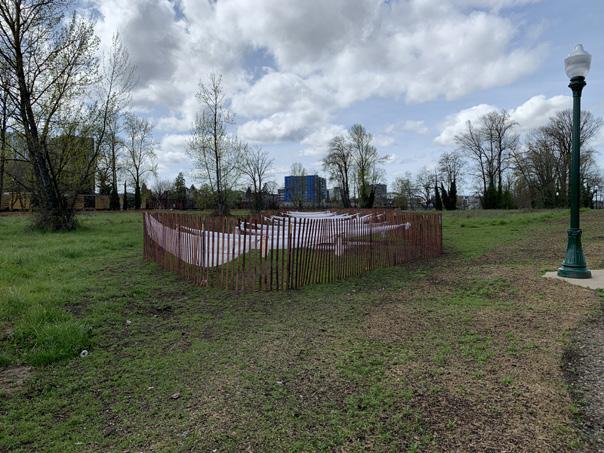




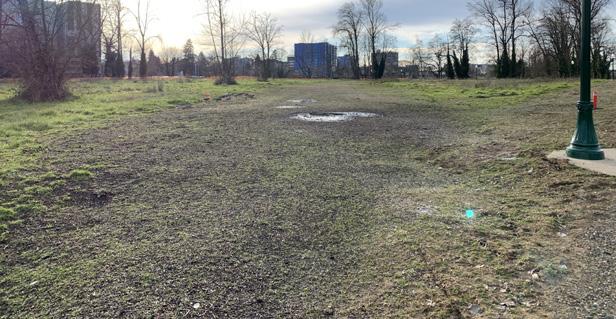
PHOTOPOINT No. 2 PHOTOPOINT No. 13
The circle of ecological compassion we feel is enlarged by direct experience of the living world, and shrunken by its lack .
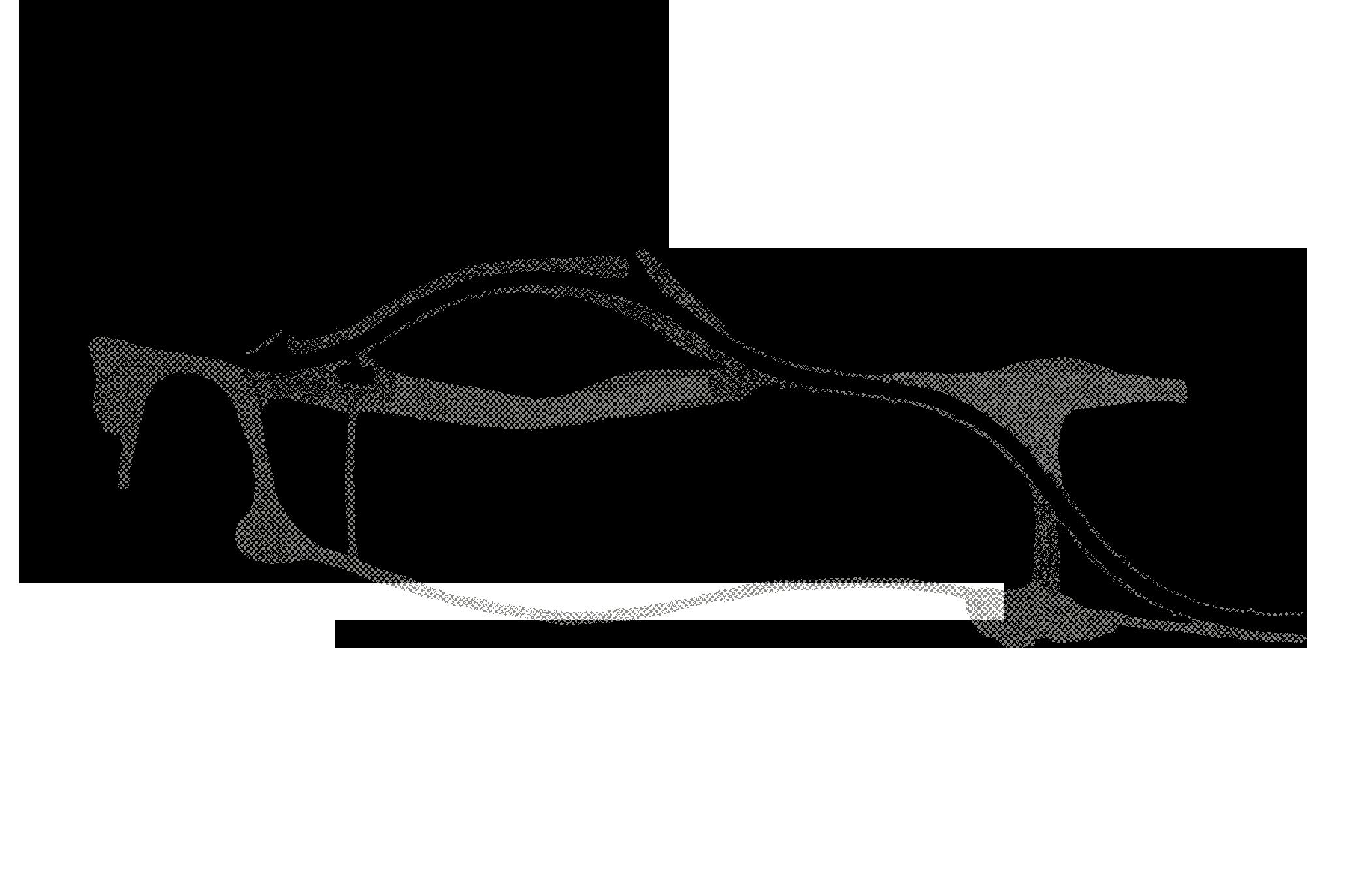

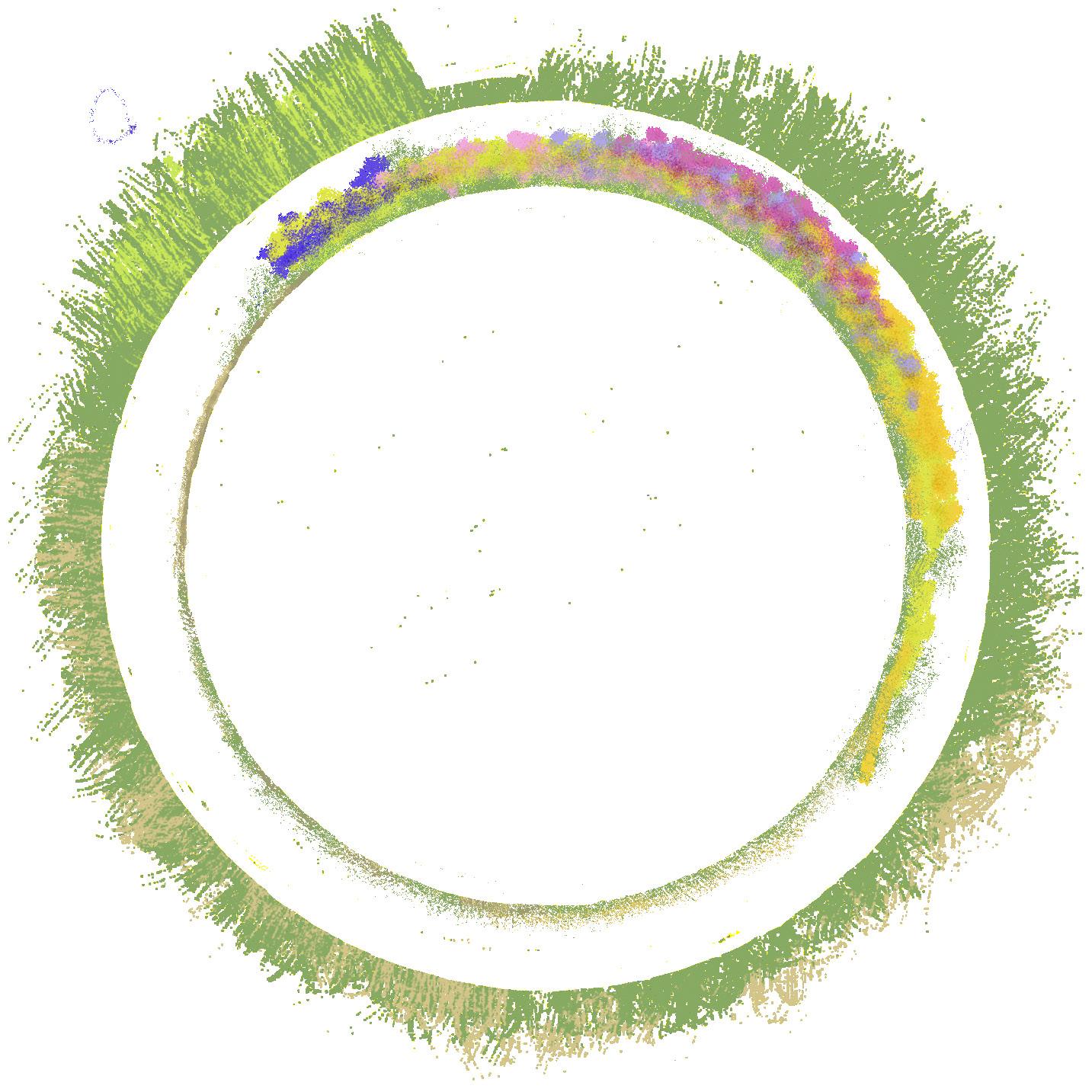
KILLDEER HOUSE
Throughout our time working on the site, we would frequently see and hear killdeer. Then one day I almost stepped on an egg, so well camouflaged in the gravelly, scrappy soil in the easement. Those who know killdeer will understand that this was a perfect place for them to nest - they prefer low vegetation and can often be found nesting in low fields and even parking lots.
killdeer nesting season grey fo seed mow equinox equinox solstice solstice last avg frost firstavgfrost f ebruary january december november october septemb e r march april may june july august Performance Interaction Documentation Exhibition
- Robin Wall Kimmerer, Braiding Sweetgrass
50
Three studies were referenced for plover nest exclosures. The forms were then adapted to consider materiality, ease of creation, and visibility. The truncated cone form (seen on facing page) is the easiest to construct and makes the most efficient use of the material. The yellow shows up well in the field.
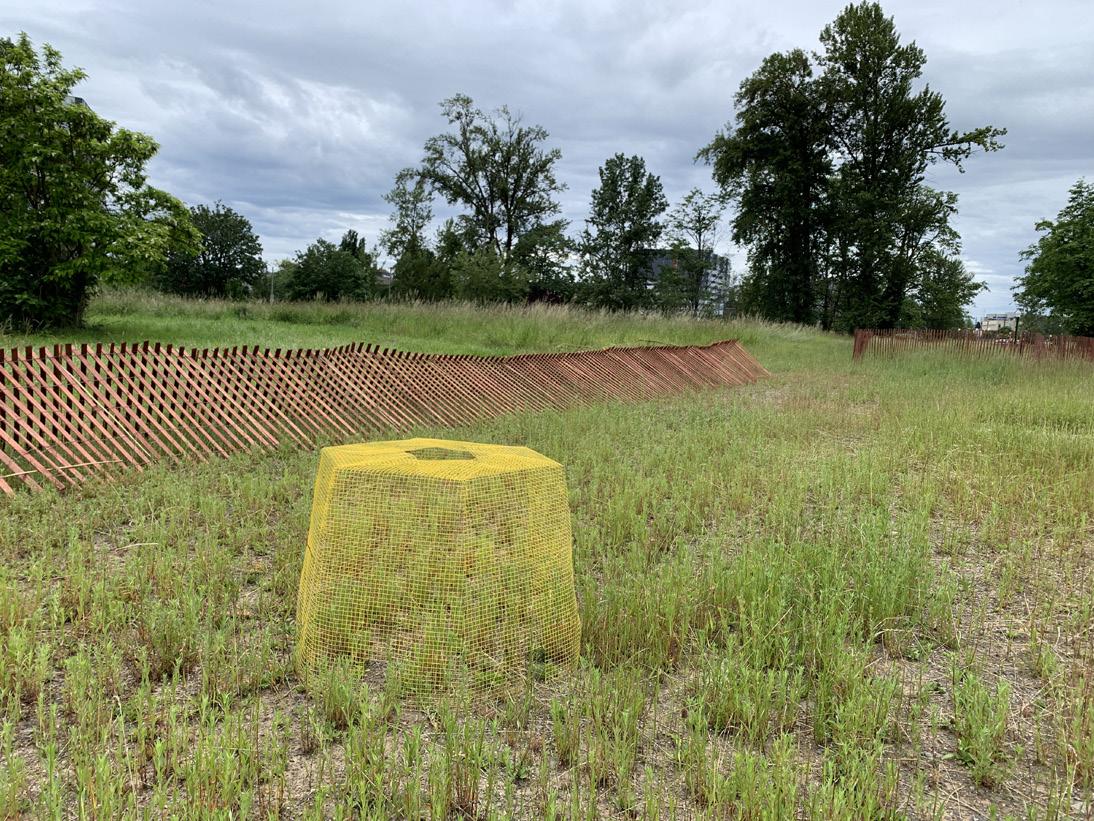



I began paying attention to the places around the riverfront where the killdeer were most often seen, and it was all the compacted gravelly spots left over from the construction and the construction vehicles. What is desirable to a killdeer is undesirable to humans…unless those humans were parking, or driving, or doing donuts. Even in our land care efforts, we were disturbing them by walking too closely or too frequently. So, I started thinking about ways to communicate the importance of what was happening in these places, and how to add some protection for the killdeer nesting areas. After reading some studies about experiments with exclosures for ground nesting birds, I found several on plovers and one specifically on killdeer. From these, I chose three examples and decided to expand upon the forms the studies used to build these prototypes. The killdeer nesting season was nearly over by the time these prototypes were built, but I am hoping that they may inform some future action to protect ground nesting birds here.
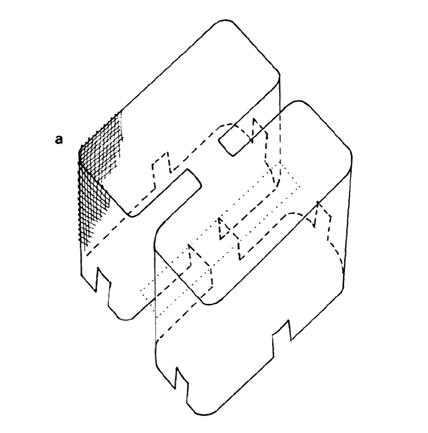 Nol et al Complex cube
Isaksson et al Truncated cone
Rimmer et al Triangle
Nol et al Complex cube
Isaksson et al Truncated cone
Rimmer et al Triangle
52
INSIGHTS
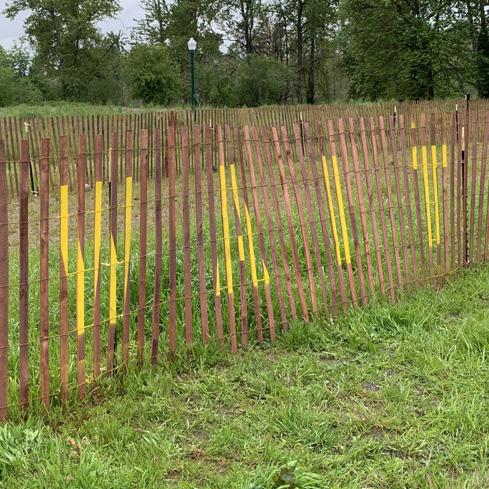



54
zone of disturbance

mulch & hydroseed
lupines 2/8/22
wildflower mix 2/17/22

fence installed 2/24/22
common killdeer sites
LAYERS OF ATTENTION
56
Address barriers to care, whether physical, social, cultural, or emotional
CENTERING CARE
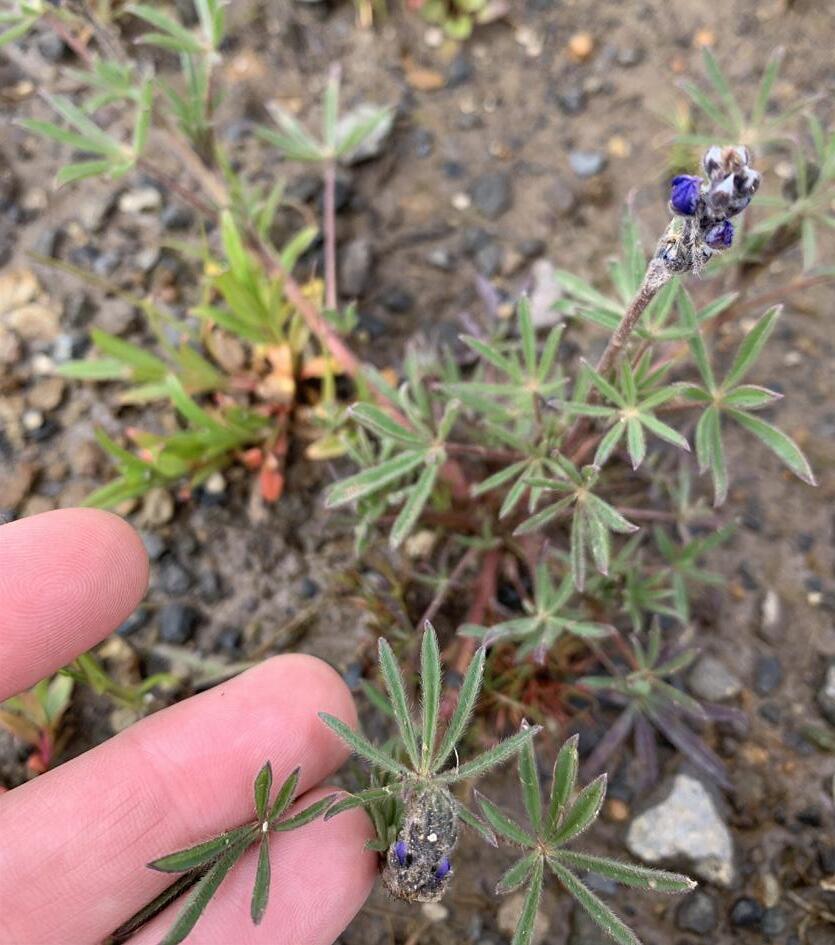
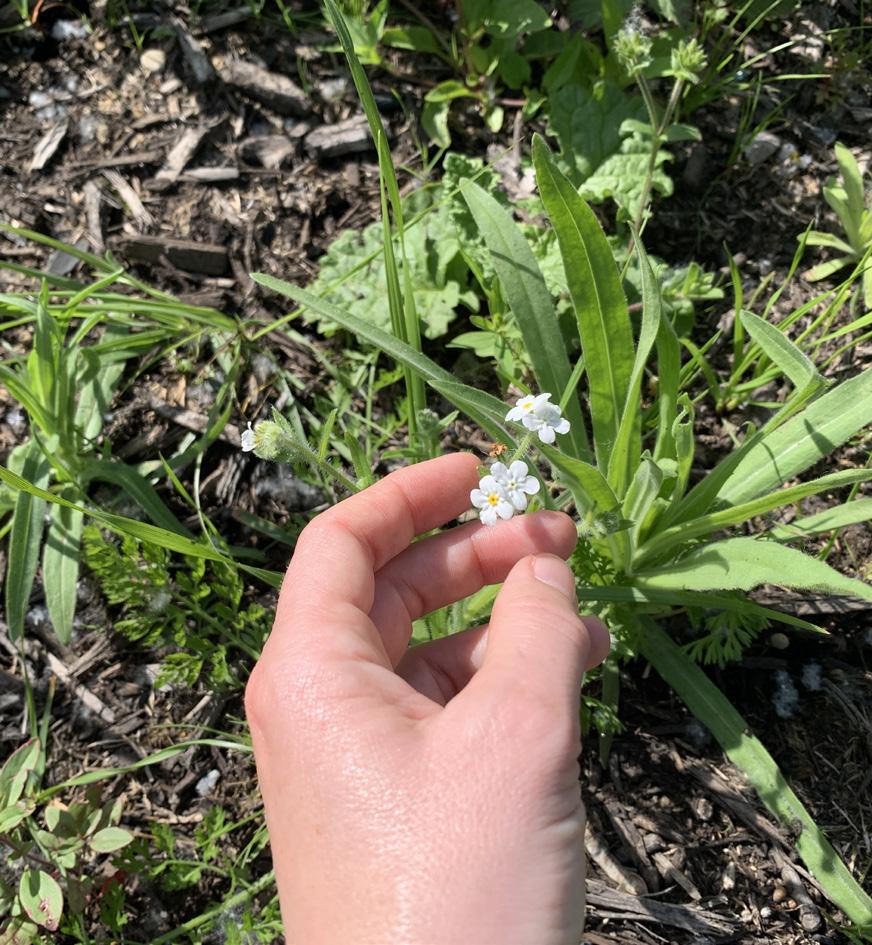

EMPATHY AS A DESIGN TOOL
Develop collaborative relationships with those communities connected to a place (both human and other than human)

Respect and respond to the conditions and materiality of a place
Be generous with time and attentionthis is the only way to build trust and understanding
58
APPENDIX

60
EXPLORATIONS
PREVIOUS LAND LAB PROJECTS


recomposition

Recomposition, Summer 2020
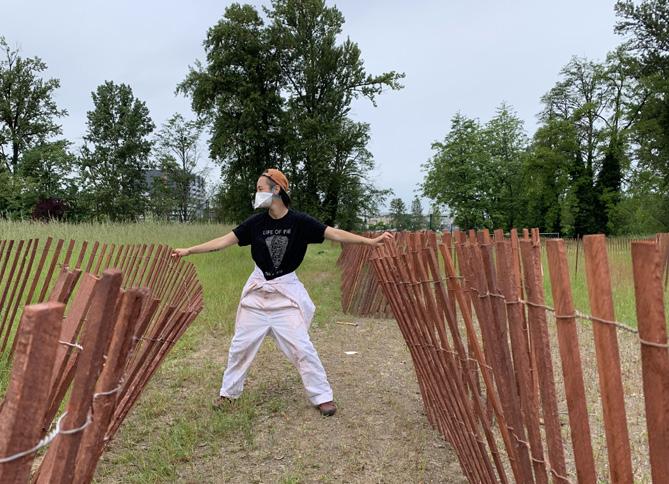
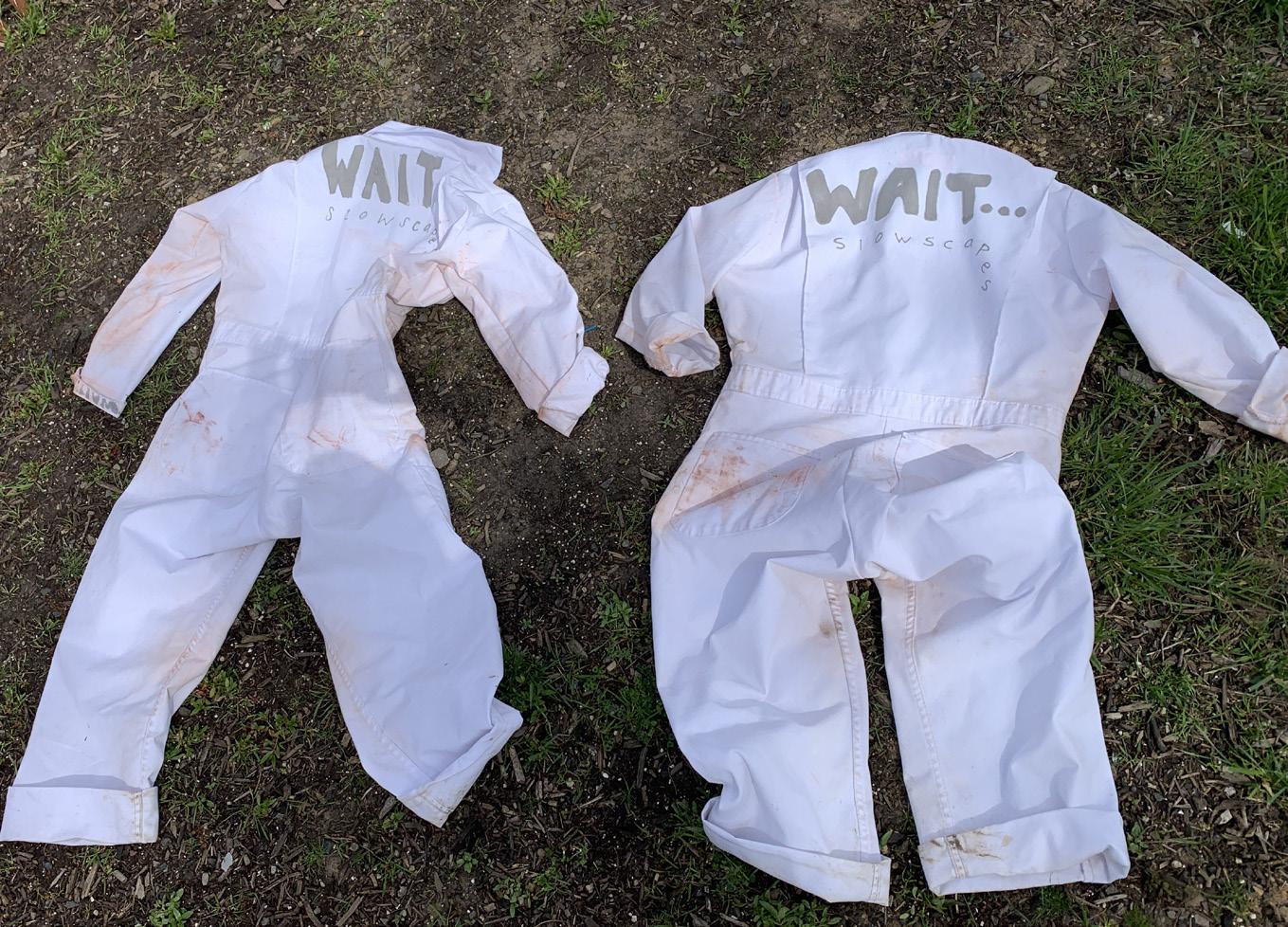
Tree Drift, Fall 2021
WAIT...slowscapes RESEARCH COLLECTIVE
We Are Investigating Time (WAIT) is a research collaboration initiated by Abigail Pierce and Masayo Simon. The research practices within this collaboration include performance, commitment, and long-term engagement with the site. Along with developing a collective practice of active observation, we also centered performing playful and celebratory acts of care to bring visibility to our own impact on the site. The project detailed within this booklet would not have been possible without the support and teamwork of WAIT.
62
PROTECTION CARE STRUCTURES

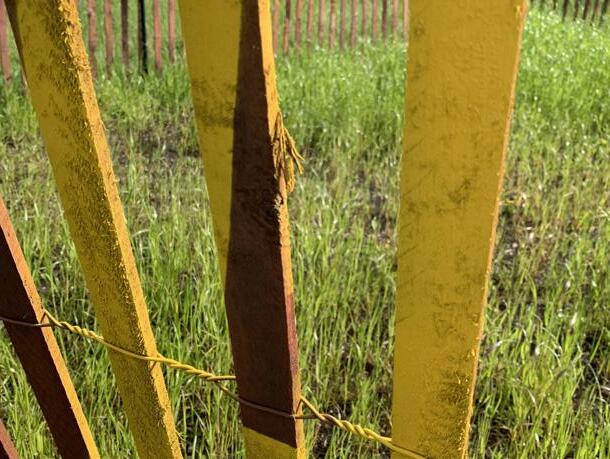
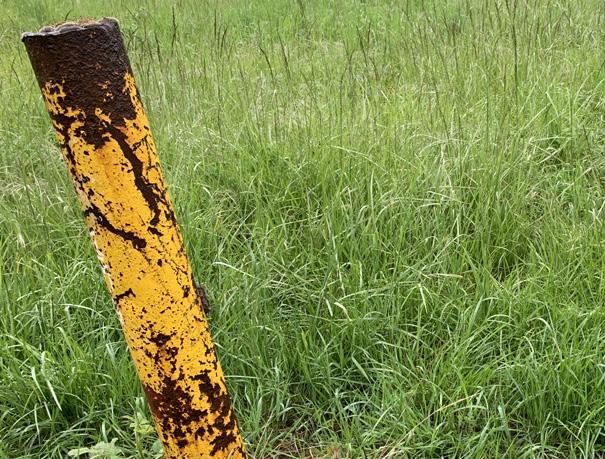


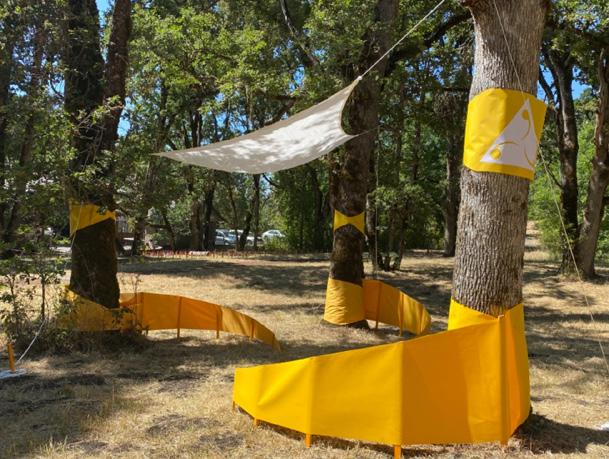

Refugium, July 2021

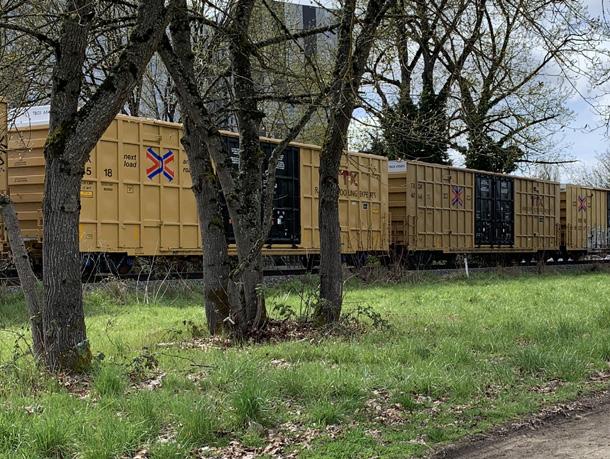
YELLOW COLOR STUDIES
 Elevated Rot, Fall 2021
Refugium, July 2021
Elevated Rot, Fall 2021
Tree Drift, Fall 2021 Points, Fall 2021
in previous projects
Elevated Rot, Fall 2021
Refugium, July 2021
Elevated Rot, Fall 2021
Tree Drift, Fall 2021 Points, Fall 2021
in previous projects
64
at the Land Lab
REFERENCES
Baum, Kelly, et al. Nobody’s Property : Art, Land, Space, 2000-2010. Princeton University Art Museum ; Distributed by Yale University Press, 2010.
Berkes, Fikret et al. “Rediscovery of Traditional Ecological Knowledge as Adaptive Management.” Ecological Applications, vol. 10, no. 5, 2000, pp. 1251–1262.
Dion, Mark, and Rockman, Alexis. Concrete Jungle. Juno Books ; Distributed by Consortium, 1996.
Ingold, Tim. Making : Anthropology, Archaeology, Art and Architecture. Routledge, 2013.
Isaksson, Daniel, et al. “Managing Predation on Ground-Nesting Birds: The Effectiveness of Nest Exclosures.” Biological Conservation, vol. 136, no. 1, 2007, pp. 136–142.
Jackson, Steven J. “Rethinking Repair.” Media Technologies, The MIT Press, 2014, pp. Media Technologies, 2014–02-28.
Jenkins, Katherine. “Field Exercises.” Journal of Landscape Architecture (Wageningen, Netherlands), vol. 13, no. 1, 2018, pp. 6–21.
Keating, Richard. “Landscape Aesthetics in Practice.” Journal of Visual Art Practice, vol. 11, no. 1, 2012, pp. 15–25.
Lacy, Suzanne. Mapping the Terrain : New Genre Public Art. Bay Press, 1995.
Lutsky, Karen, and Sean Burkholder. “Curious Methods.” Places (Cambridge, Mass.), no. 2017, 2017, pp. Places (Cambridge, Mass.), 2017–05-23 (2017).
Mattern, Shannon. “Maintenance and Care.” Places (Cambridge, Mass.), no. 2018, 2018, pp. Places (Cambridge, Mass.), 2018–11-20 (2018).
Nassauer, Joan Iverson. “Messy Ecosystems, Orderly Frames.” Landscape Journal, vol. 14, no. 2, 1995, pp. 161–170.
Nol, E, and RJ Brooks. “Effects of Predator Exclosures on Nesting Success of Killdeer.” Journal of Field Ornithology, vol. 53, no. 3, 1982, pp. 263–268. Pauliny, Angela, et al. “Nest Predation Management: Effects on Reproductive Success in Endangered Shorebirds.” The Journal of Wildlife Management, vol. 72, no. 7, 2008, pp. 1579–1583.
Phillips, Patricia C., et al. Mierle Laderman Ukeles : Maintenance Art. Prestel, 2016.
“Quick Guide to Photo Point Monitoring.” United States Department of Agriculture Natural Resources Conservation Service
Rimmer, Dw, and RD Deblinger. “Use of Predator Exclosures to Protect Piping Plover Nests (Utilización De Cercados Para Proteger Nidos De Charadrius Melodus).” Journal of Field Ornithology, vol. 61, no. 2, 1990, pp. 217–223.
Russeth, Andrew. Maintenance Work: Andrew Russeth Considers the Role of Art in a Pandemic, Artforum International, 24 Mar. 2020, www. artforum.com/slant/andrew-russeth-considers-the-role-of-art-in-apandemic-82548.
Mierle Laderman Ukeles, “Maintenance Art Manifesto” (1969)
66

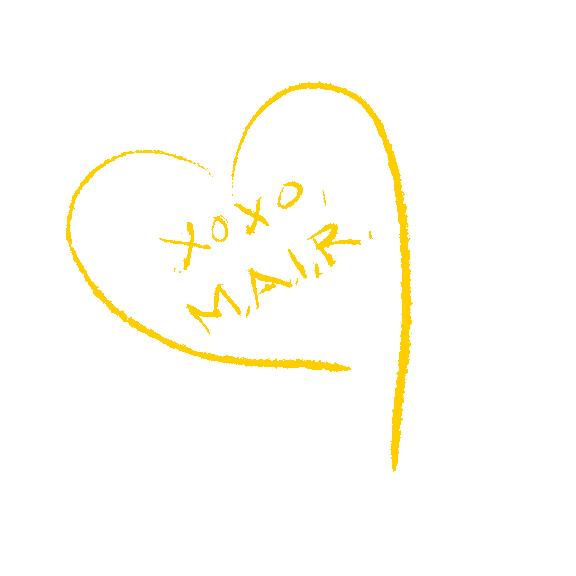
LAND CARE IN THE EXPANDED FIELD
by Abigail Pierce Project Advisor: Michael Geffel
START AT PUDDLE [COVER]
MASAYO+ ABBY:
Hi! We are Masayo and Abby, and we are WAIT…slowscapes, a place-based, process-driven research collective. WAIT stands for We Are Investigating Time, and it was created to design an ongoing practice for ourselves.
[WAIT SPREAD]
MASAYO:
The research practices within this collaboration include performance, commitment, and long-term engagement with complicated landscapes. Along with developing a collective practice of active observation, we also center playful and celebratory acts of care to bring visibility to our own impact on the site.
WAIT aims to expand upon the design process, asking how designers could allocate more creative resources into analysis and maintenance. To study this, we asked what would happen if we instead designed processes that centered land care by focusing on forming intimate connections with the landscape through creative fieldwork, and framing maintenance as an artistic act.
This presentation shares a series of sub-projects that emerged from the questions above. While we each investigated individual components during this project, we see each project as a smaller component that reinforces WAIT as a whole.
ABBY:
We decided that our efforts would be strongest as a collaboration when we discovered that our interests overlapped. Plus, after two years of remote learning, we wanted to develop a communal practice of researching, processing findings, and designing outcomes. We also felt a need to prepare for a future practice by working with landscape, in the landscape. As we talked through our ideas, it became apparent that the themes we were both exploring were very similar. Those themes are: Care. Commitment. Collaboration. Connection. Creativity
In the following projects, we will introduce our independent research interests in more detail, and how they intertwine with each other.
We decided to take this opportunity to be messy all the way through till the end. By not treating landscape as a problem to be solved with neatly packaged design ‘solutions’, we were free to let connections emerge.
SCRIPT FOR PRESENTATION 6.4.2022
Note: this was a joint presentation with Masayo Simon
[MASAYO’S FOCUS SPREAD]
MASAYO:
Through this project, I am weaving together three topics of interest:
I am interested in developing a process that uses art and creative fieldwork as a means to center intimate connection with landscape as a research and design practice. This includes highlighting sensory knowledge and personal experience as critical parts of site analysis.
I’m looking for ways to create an inclusive practice where the research phase involves facilitating dynamic experiences for and with others.
I am interested in investigating methods for landscape interpretation that acknowledge the complexities of post-extraction landscapes, while creating openings for reparative connection?
My interests draw inspiration from Karen Lutsky and Sean Burkholder’s article Curious Methods. Their process of landscape interpretation examines the lost complexities in documenting living landscapes through maps and historic surveys. They create their own non-solutionist investigation of engaging with landscape through experience-based stages that they name as INQUIRY - INSIGHT - IMPRESSION. “Inquiry” is the process of asking questions through quick, physical interventions on the landscape. “Insight” is the feedback they gain from these experiences. Their impressions are recorded quickly, with the knowledge that these will constantly change.
I used this open-ended framework as a guiding practice during my process, which led to emergent connections and many rabbit holes that allowed for constant shifts within the shape of this project.
[ABBY’S
FOCUS SPREAD]
ABBY
My interests involve exploring the intersection of art and landcare with an eye toward promoting greater understanding about the impacts of landscape standards on ecological function and social needs.
For this project, I was inspired by the work of the artist Mierle Laderman Ukeles, who has been the maintenance artist in residence with the New York Sanitation Department for 40+ years. Ukeles’ work to explore and expose the complexity and nature of maintenance and the lived experience of the people that do maintenance work is unparalleled. As a framework for this project, four typologies of maintenance art are identified through Ukeles’ work: interaction, performance, documentation, and exhibition. The guiding question for this project has been: How can the Ukeles model of maintenance artist in residence be applied within landscapes?
Studying land care in this way will hopefully lead to understanding its potential as a socially engaged, multi-disciplinary creative practice. A Maintenance-Artist-in-Residence can act as a living link between designer and caregiver and community, increasing visibility and respect for land care, the labor it involves, and the creative potential it holds.
So, now that we’ve given you a bit of background on our focus, we are going to move a bit further into the site.
MOVE TO CONCRETE MISTAKE
[SITE IMPRESSIONS SPREAD]
MASAYO:
We chose to work on this site for several reasons. Field work was central to our project, and it was easy to get here. There was also landcare research already happening there: Michael’s field experiments in parametric mowing. It is also a disturbed site with novel ecosystems that are representative of many highly impacted urban landscapes that are frequently undervalued and overlooked.
ABBY:
We were also struck by the impressions of the site. It didn’t seem to generate a lot of interest, and was the victim of many negative impressions. The large zone of disturbance from the recent construction of the bike path and water easement did nothing to help these impressions. On these pages are some people's responses to the site and as you can see, they are less than glowing.
Despite these impressions, the site is full of complexities and hidden histories, so we’ll zoom out a bit to give you some context before we dive into our projects.
[INDUSTRIAL AFTERMATH SPREAD]
In the last 200 years, massive changes caused by dispossession, extraction, and landfill drastically altered the landform, soil structure, and ecological relationships of this place. What we see here today looks and functions very differently from what was here prior to settler colonialism.
[TIME + SCALE SPREAD]
MASAYO:
This timeline shows the relative scale of events that shaped this landscape. It’s important to note that the records that are most often available in landscape research are from the period after white settlers colonized this area, from 1850 to present-day.
ABBY:
We would be remiss not to acknowledge that the Kalapuya are the first maintainers, artists, and residents of this land. Our practices here are not new or revolutionary but rather an attempt to develop a reciprocal relationship with place.
Additionally, there is a lot of previous scholarship and art that inspired us to look deeply into land care, slow research, and sensory connection with place. We do not have time to go into these topics in depth, but have references to check out in our individual booklets.
[POINTS OF ENTRY SPREAD]
ABBY:
With these layers of complexity in mind, how does one person start to build a caring relationship with a place? To do this, we each had entry point actions that got us connected to the site at the start and represented the commitment we made to get to know it.
On the right side is a map of the 15 photo points I set up around the Land Lab. Starting in early January, I committed to photographing them weekly. This idea came about by combining a guide to photopoint monitoring and the Ukeles’ documentation typology. It became a weekly ritual, rain or shine (or hail), creating a structure for my commitment to this place. This ritual became something I looked forward to as a quiet practice of sensory connection. The images that were created recorded the changes over time due to ecological and maintenance processes at play here. I have an example of one set of photo point images to share (at the end?).
MASAYO:
I walked the same transect weekly, starting south from the train tracks, heading north through the field, the cottonwoods, and finally the riverbank. I was particularly looking for ways that my body and sensory ways of knowing responded to following my curiosity, and then how these ways of knowing led to an understanding of place that spans outside of the logic of maps, surveys, and historic photographs of the area. Following Curious Methods, I used different methods to record these transects; through photographs, collage, making sensory instruments, and recording sound.
Through this continual investigation, I realized that the whole story of this site could be told through one transect. I began to wonder how this way of storytelling could be expanded into other elements on this site; the pieces of gravel, the blackberry, the red tail hawk.
MOVE TOWARD MILLRACE WHILE TALKING ABOUT UNIFORMS
[UNIFORMS - NO SPREAD SINCE WE WILL BE WEARING THEM]
ABBY:
We wanted another way of communicating that in our research process, we were changing the site and also becoming part of it. We decided to wear uniforms when on the site as a representation of our commitment to this practice and a communication device that increased the visibility of our presence and impact. We chose these white coveralls because they would show dirt and grass stains, and highlight the passage of time through the materials of the place. There is also a performance aspect – we are highly visible when wearing these and passersby are more likely to interact with us. (Of course, this also relates to the Ukeles performance typology)
[SEEDING & FENCING SPREADS]
ABBY:
Following the construction of the water easement, the area through the center was very disturbed and compacted. It had been seeded in the fall but that seeding had failed, so we adopted it. Michael chose a seed mixture of pollinator-friendly native annuals and perennials with the help of Bart Johnson and Bitty Roy, and we spread that in February of this year. We also seeded along the pathway and this section here shows some of the plants we seeded: lupines, tarweed, gilia, for example.
After seeding, we constructed the fence with the idea that it would help germination in the easement by keeping the geese from browsing. We sought to explore the creative potential and aesthetic properties of common landscape materials such as t-posts, temporary fencing and row cover fabric. The construction involved a collaborative process, and required maintenance and adaptation along the way. *Ask Michael if he has anything he’d like to contribute here
Throughout the time we were working out here, we had many interactions with the people, animals, and birds that are on this site. These spontaneous interactions were generative and informed our next phase of this project. In this next section, we will both share the intentional interactive projects we did.
MOVE TO MAINTENANCE ROAD PULLOUT
[INTERACTIONS SPREADS]
Masayo: Workshop - Sensing Time
Throughout this process, I was creating a short workshop in collaboration with Nina Elder, an interdisciplinary artist. Her work examines how our lives are entangled with ghosts of mines, gravel, and glaciers–appropriate for this site. <<<”since it used to be a gravel quarry” >>>
We worked with Liska’s transpecies design class.The main goal of the workshop was to facilitate an experience for collaborative sensory investigation grounded in our connections with the site across space and time. The workshop was divided into three sections:
Grounding exercise
Sensory prompt/ways of knowing exercise
Students create their own prompts, trade, and perform them.
As a debrief, students diagramed their relationship to the site before and after the exercises. The diagrams and our final discussion showed many changes in perception of the site after we had created space for deep engagement. Some felt more a part of the landscape, while others felt that the complex dynamics that emerged as they learned more about the site made them realize how much they would never know.
REFLECTION:
This experience reflected that creative fieldwork in the form of workshops creates an opportunity for inclusive, visible, and experiential forms of site analysis.
I synthesized student experiences, prompts, and reflections into categories that could create engaging site interpretation for future experiences and installations.
· Activate imagination –imagination allows access to abstract concepts/timescales about place
· Foster creative forms of embodied and sensory inquiry – creating space for novel experiences helps people make new connections
Create open-ended invitations for attention, curiosity, and participation – deep attention to place is an opening for creating a relationship of intimacy and care.
Now we will transition to the interactions embedded in Abby’s project.
[CREW INTERVIEWS SPREAD]
ABBY:
Taking cues from the interaction typology, four members of the University grounds maintenance crew allowed me to ride along with them and talk about labor and land care. Through these rides they showed me the areas that they are responsible for. It should be noted that Nick is the only crew member whose area includes the waterfront, and as you can imagine that is a huge task for a single person.
Though it was my intention to let the conversation flow, I had prepared a few questions:
How would you describe your work/what do you call your position?
What do you wish those who design landscapes knew about maintenance?
Which areas are harder or easier to maintain and why?
Do you feel your work allows you to be creative?
[RECURRENT
THEMES SPREAD]
ABBY:
Recurrent themes from these conversations fell into four categories: Access, Materials, Time, and Relationship, and I think these are essential for developing a care-centered landscape practice.
Access specifically relates to the ability to get in and care for a place. Quite simply, if someone cannot readily access a space with the necessary tools, it is harder for them to care for it. But access can also relate to other barriers to care beyond just the physical: there can be political, social and cultural barriers.
Materials are the stuff of landscape: soil, plants, hardscaping, but also the temporary, intermittent things that come in from construction or installation. When these items are selected there is the hope that they would be chosen with the intention that they be long lasting and site appropriate. Unfortunately, that is not always the case, and the crews have to deal with the consequences.
ARRIVE AT FENCE NEAR MILLRACE
Time is a constant in the landscape. Anyone who actively works within landscapes understands that they are working with and within time.
Finally, relationship: too often those who are designing landscapes have little contact with those who tend to landscapes. This is unfortunate because the people caring for landscapes have a unique and valuable perspective on the realities of a place. Collaborating with them will help to ensure that longterm thinking and reciprocal practices are honored.
We have been spending the last two weeks prototyping for temporary installations that are the result of spending so much time getting to know this place and its inhabitants.
MOVE TO FIELD
[TREE GHOSTS SPREAD]
MASAYO:
TREE GHOSTS
I’m currently in the process of exploring prototypes for a site-specific temporary installation that highlights the black cottonwoods here. I became inspired by the presence of the cottonwoods after seeing how students engaged with them during the workshop. Black Cottonwoods are dynamic, charismatic, and engaging, and are also indicators of ecosystems that emerge from disturbance. The installation is accompanied by a zine that contains prompts inspired or developed by students from Liska’s class as a way to facilitate openings for relational connections with these trees and the site.
I’m using reemay as a part of the material palette that we developed early on in this project as a way to draw attention and curiosity to the tree to cue visitors into the narrative of the site. These cottonwoods can be looked at as past and future ghosts. Their presence tell stories of landscape altering events, while providing habitat for many species here–and will continue to do so into the future. The cottonwoods highlighted here are on their way to becoming future snags. ((In times before extraction, development, and flood control interrupted this landscape, Black Cottonwoods would have likely rooted after major flood events changed the path of the river, providing conditions for riparian forests to follow. These cottonwoods, however, are the result of post extractive, post-dumping disturbance to this landscape. Often referred to as ‘trash trees’, they indicate emergence and survival after violent disruption that prioritized resource over connection. These Cottonwoods can be looked at as past and future ghosts. Their lifespan tells stories of landscape altering events while their presence provides habitat for many species here–and will continue to do so into the future. What can we learn from the cottonwoods?))
Prototyping this installation has acted as a research tool of site dynamics in its own right–due to weather patterns, the site has been entirely different each day I’ve worked out here. 18 mph winds left the grasses trampled. On calm days, the fabric falls flat, on windy days it is wild.
[KILLDEER HOUSES SPREAD] standing by the killdeer houses in the easement
ABBY:
Throughout our time working on the site, we would frequently see and hear killdeer. The turning point came when I almost stepped on an egg, so well camouflaged in the gravelly, scrappy soil in the easement. Those of you who know killdeer will understand that this was a perfect place for them to nest - they prefer low vegetation and can often be found nesting in low fields and even parking lots. I began paying attention to the places around the riverfront where they were most often seen and it was all the compacted gravelly spots from the construction and the construction vehicles. What is desirable to a killdeer is undesirable to humans…unless those humans were parking, or driving, or doing donuts. Even in our land care efforts, we were disturbing them by walking too close or too frequently. So, I started thinking about ways to communicate the importance of what was happening in these places, and how to add some protection for the killdeer nesting areas. After reading some studies about experiments with exclosures for ground nesting birds, I found several on plovers and one specifically on killdeer. From these, I chose three examples and decided to expand upon the forms they used to build these prototypes. The killdeer nesting season is nearly over and they have moved on to the pole yard, but I am hoping that these prototypes may inform some future action to protect ground nesting birds here.
[REFLECTIONS]] at the new fence]]
Even though we’ve presented these projects individually, it should be noted that we’ve helped and supported each other every step of the way–through building installations, prototyping, ideation and talking through challenges. That was a crucial part of this whole process for both of us, especially within the challenges of creating a process-driven design project. Our conversations were generative, and the affirmation that we got from them encouraged creativity and exploration.
Additionally, we found that a lot of our methods for bringing visibility to most of our processes created an inclusive structure for working with outside groups. Designing creative forms of active community engagement inspired multidisciplinary pollination that we both want to continue to work with in the future.
Most of all, what surprised us about this process is how much we both fell in love with the site. We started out ambivalent, and at some point, started to really look forward to our time together here. Leaving space for open-ended investigations of the site was what allowed for that connective relationship to occur–neither of us were looking for specific things, nor had a specific objective for approaching this place when we started out, and so we ended up developing a relationship.
As a collective, we hope that these projects will continue to inform a care-centered approach to this landscape, as well as other landscapes that we work with in the future. We hope that these processes can be inspiring for other landscape architects – to not necessarily replicate – but to look for their own openings to invite this type of long-term engagement into their practices.

 ABIGAIL PIERCE, UO MLA 2022
MICHAEL GEFFEL, PROJECT ADVISOR
ABIGAIL PIERCE, UO MLA 2022
MICHAEL GEFFEL, PROJECT ADVISOR



























 - Madeline
- Madeline







 - Karen Lutsky and Sean Burkholder, “Curious Methods”
- Karen Lutsky and Sean Burkholder, “Curious Methods”









 - Shannon Mattern, “Maintenance and Care”
- Shannon Mattern, “Maintenance and Care”

































 Nol et al Complex cube
Isaksson et al Truncated cone
Rimmer et al Triangle
Nol et al Complex cube
Isaksson et al Truncated cone
Rimmer et al Triangle

























 Elevated Rot, Fall 2021
Refugium, July 2021
Elevated Rot, Fall 2021
Tree Drift, Fall 2021 Points, Fall 2021
in previous projects
Elevated Rot, Fall 2021
Refugium, July 2021
Elevated Rot, Fall 2021
Tree Drift, Fall 2021 Points, Fall 2021
in previous projects

